
What's Your State's Floral Symbol? Find Out Here!
What is your state flower? Check out our helpful chart! From the iconic Texas bluebonnet to the delicate Alaska forget-me-not, each state has a unique flower representing its heritage, natural beauty, and cultural significance. Explore the stories behind these floral emblems and learn why they were chosen to represent their respective states.
State Flower Chart
| State | State Flower | State Wildflower |
|---|---|---|
| Alabama | Camellia | Oak-Leaf Hydrangea |
| Alaska | Alpine Forget-Me-Not | — |
| Arizona | Saguaro Cactus | — |
| Arkansas | Apple Blossom | — |
| California | California Poppy | — |
| Colorado | Columbine | — |
| Connecticut | Mountain Laurel | — |
| Delaware | Peach Blossom | — |
| Florida | Orange Blossom | Leavenworth’s Tickseed |
| Georgia | Cherokee Rose | Azalea |
| Hawaii | Yellow Hibiscus | — |
| Idaho | Syringa | — |
| Illinois | Violet | Milkweed |
| Indiana | Peony | — |
| Iowa | Prairie Rose | — |
| Kansas | Sunflower | — |
| Kentucky | Goldenrod | — |
| Louisiana | Magnolia | Louisiana Iris |
| Maine | White Pine Cone | — |
| Maryland | Black-eyed Susan | — |
| Massachusetts | Mayflower | — |
| Michigan | Apple Blossom | Dwarf Lake Iris |
| Minnesota | Lady Slipper | — |
| Mississippi | Magnolia | — |
| Missouri | Hawthorn Blossom | — |
| Montana | Bitterroot | — |
| Nebraska | Goldenrod | — |
| Nevada | Sagebrush | — |
| New Hampshire | Lilac | Lady Slipper |
| New Jersey | Violet | — |
| New Mexico | Yucca | — |
| New York | Rose | — |
| North Carolina | Dogwood | Carolina Lily |
| North Dakota | Prairie Rose | — |
| Ohio | Red Carnation | White Trillium |
| Oklahoma | Oklahoma Rose | Gaillardia |
| Oregon | Oregon Grape | — |
| Pennsylvania | Mountain Laurel | — |
| Rhode Island | Violet | — |
| South Carolina | Yellow Jessamine | Goldenrod |
| South Dakota | American Pasque | — |
| Tennessee | Iris | Passion Flower |
| Texas | Bluebonnet | — |
| Utah | Sego Lily | — |
| Vermont | Red Clover | — |
| Virginia | Flowering Dogwood | Virginia Bluebell |
| Washington | Rhododendron | — |
| West Virginia | Rhododendron | — |
| Wisconsin | Violet | — |
| Wyoming | Indian Paintbrush | — |
The History of State Flowers
The idea of each state being represented by a flower was popularized by the 1893 Chicago World’s Fair, where the World’s Congress of Representative Women created a national garland made up of 44 flowers from 44 states to decorate the Women’s Building.
Soon after the fair ended, the National Floral Emblem Society was created, and each state endeavored to pick one flower to stand for it. Many chose the flower used for the exhibit at the fair, but for others, it was a tough choice. Some thought it should be a native flower; others went for beauty only. Garden clubs, politicians, and businessmen often disagreed, so many states asked schoolchildren to vote for their favorite. Check out the results!
Read Next
.jpg)
State Flowers
Alabama

Photo: Alex Manders
The Camellia (Camellia japonica), often called the “Rose of Winter,” blooms in March (learn about more flowers that bloom in the winter). A symbol of resilience, its white, pink, or red flowers can be seen along roadsides, in parks, on hiking trails, and in gardens. A non-native, in 1959, it was chosen to replace the native goldenrod—which many people thought of as a weed—as Alabama’s state flower.
Oak-Leaf Hydrangea is the state wildflower.
Alaska
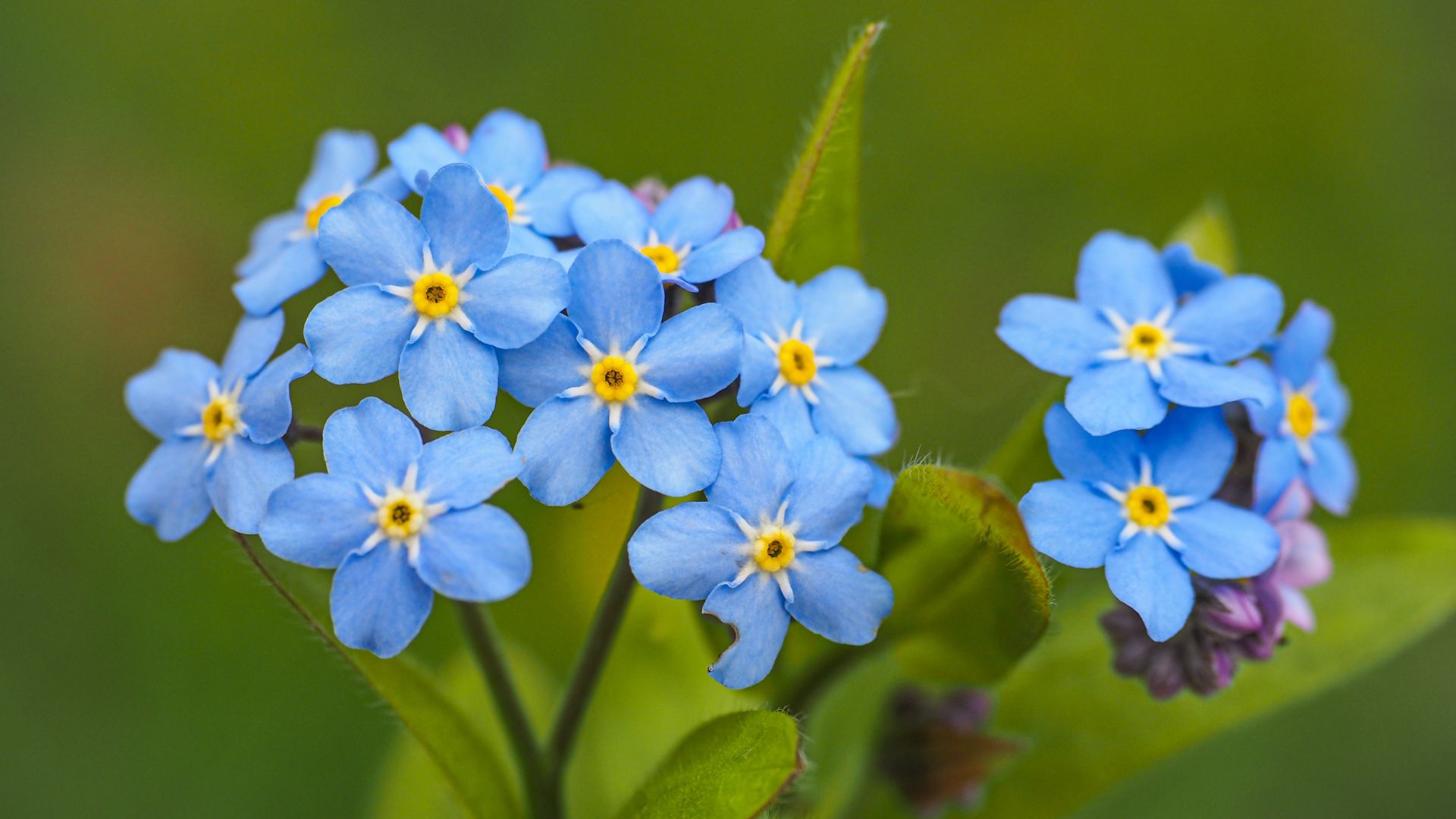
Photo: Life Collection Photography
Alpine Forget-Me-Nots (Myosotis alpestris) are rugged alpine plants that blanket the meadows and mountains with bright blue flowers during Alaska’s short summers. It was one of the inspirations for the blue background of the state flag. In 1917, forty-two years before it became a state, a group called the Grand Igloo, which represented pre-1900 pioneers, chose the forget-me-not as the territory’s floral emblem. It became the official state flower in 1959 when Alaska entered the Union.
Arizona
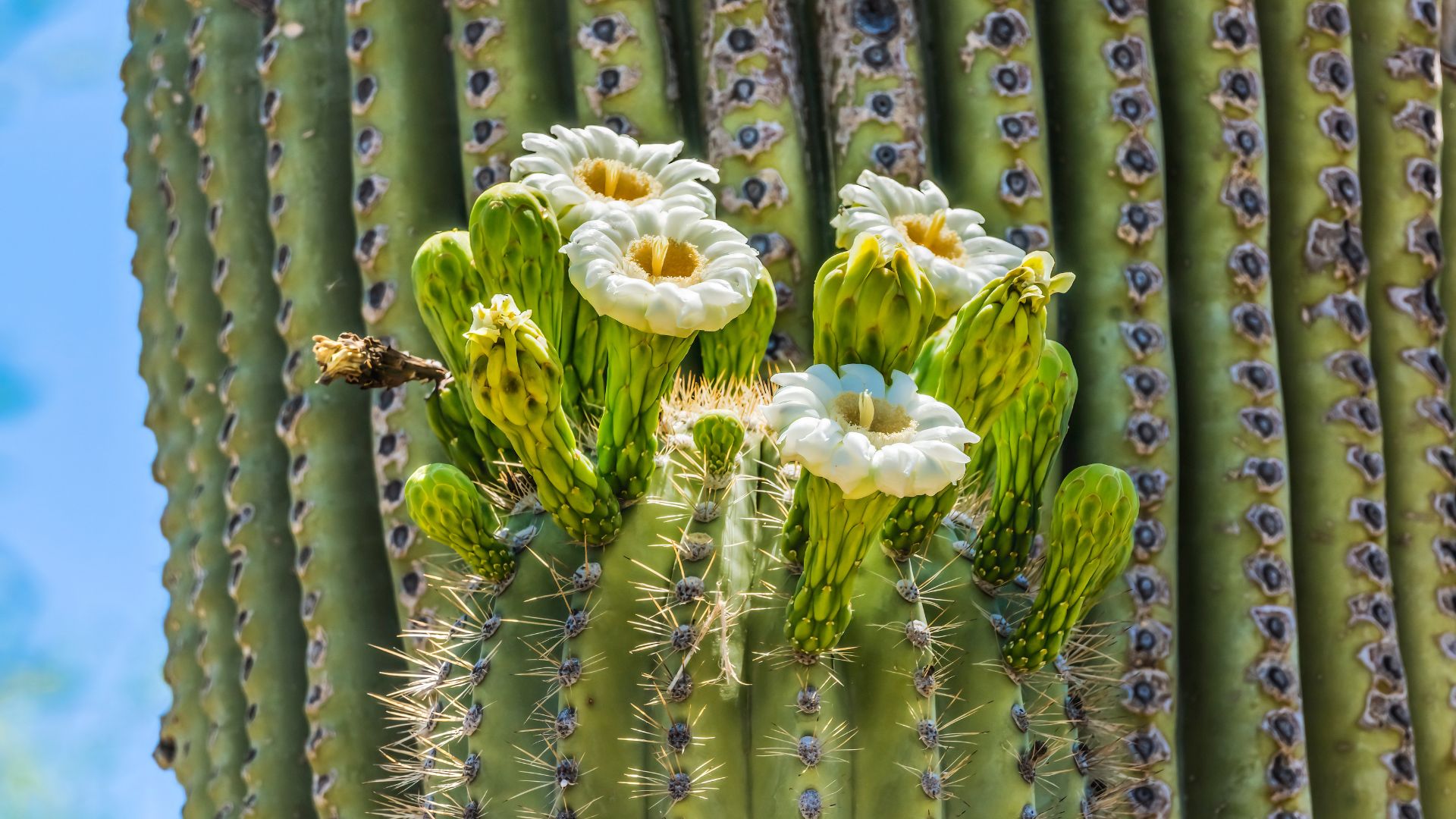
Photo: Bill Perry
The Saguaro cactus (Carnegiea gigantea) has fragrant, white waxy blooms in late spring and early summer. They open at night and are an important nectar source for bats. By noon, the flowers are done. Native people made a sweet syrup from its red fruits. Long-lived, it is the tallest cactus in the US, can reach 40 feet high or more, and forms multiple arms. In 1901, it was chosen as the floral emblem of the territory, and the state flower was named in 1931.
Arkansas
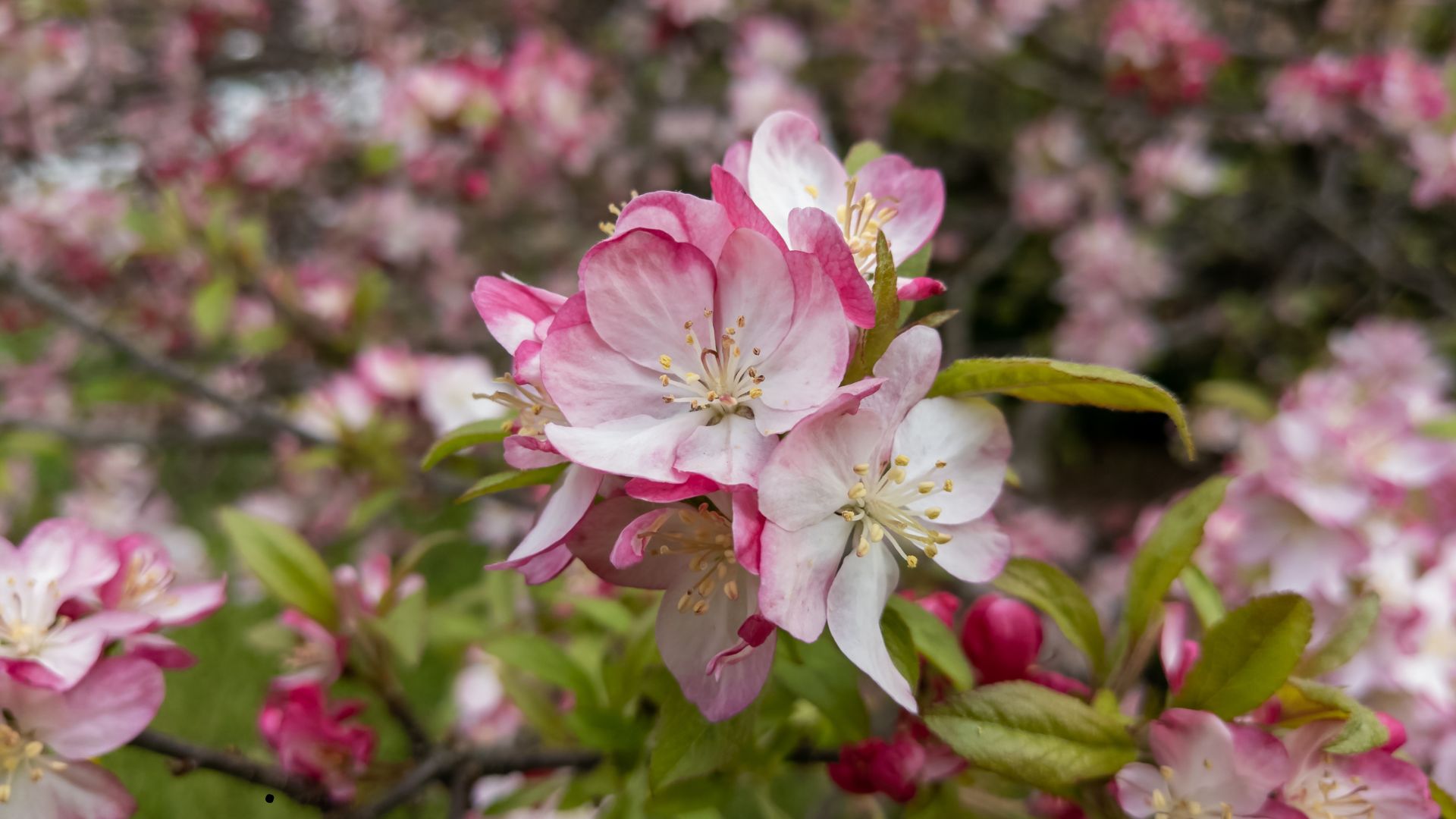
Photo: Ethan R.
Apple Blossoms were named the state flower of Arkansas in 1901, a time when apples were a major crop. Four other flowers were in the running, but the arrival of a bushel of tasty apples in the Senate chamber swayed the vote in favor of the apple blossom. Though 400 varieties were being grown in the state at the time, including prizewinning ‘Arkansas Black,’ the native American crabapple (Malus/Pyrus coronaria) was chosen. It has pink buds that open to fragrant white spring flowers and bears tart red fruits in autumn. Apple blossoms are also the state flower of Michigan.
California
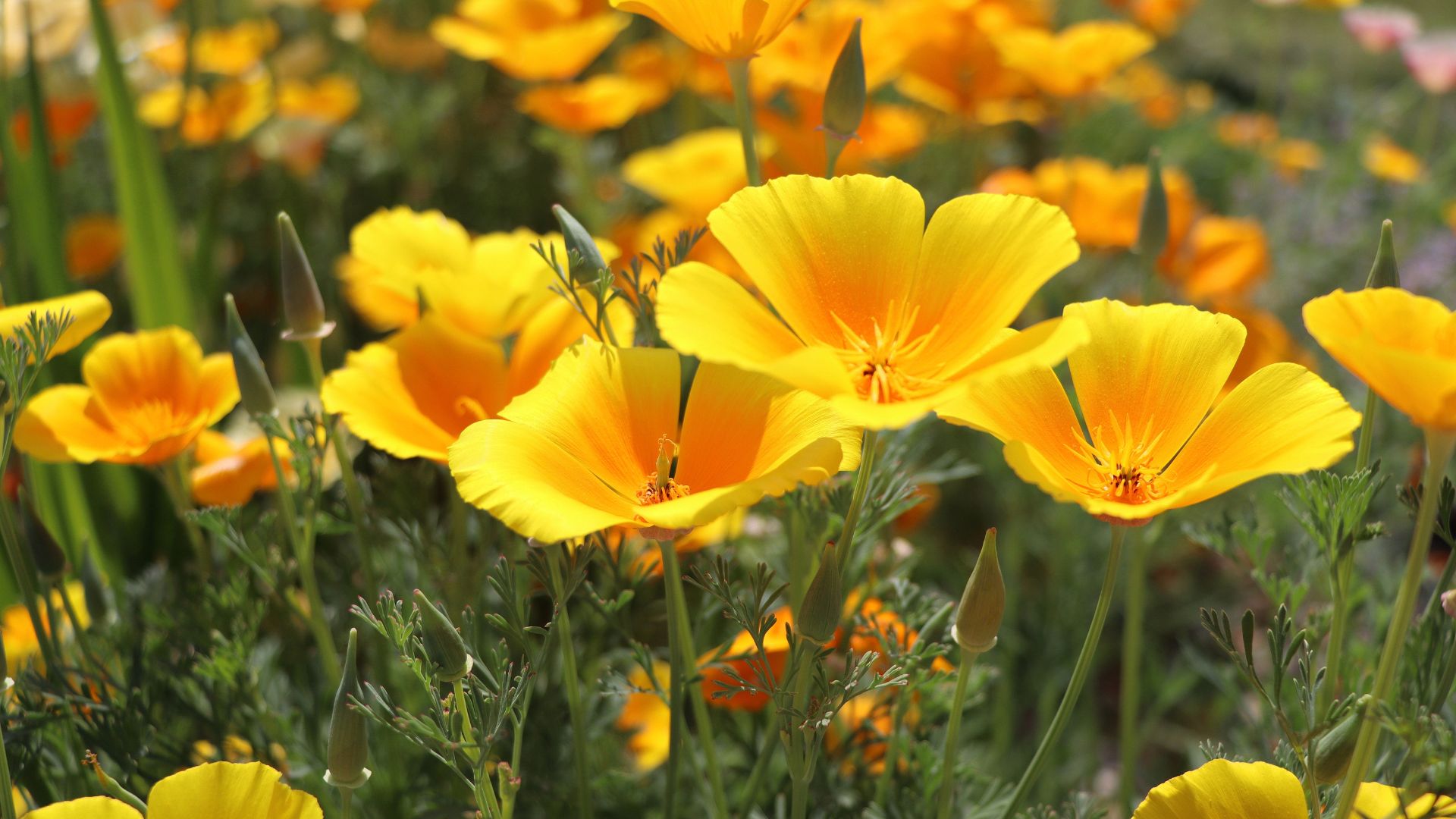
Photo: vaivirga
California Poppy (Eschscholzia californica) is a native West Coast wildflower that covers fields and hillsides with bright golden, cup-shaped flowers in spring and summer. An obvious choice for the Golden State, it was named their state flower in 1903. In 2010, April 6th was designated as California Poppy Day, May 13-18 is Poppy Week, and there is an Annual California Poppy Festival in Lancaster in late April!
Colorado
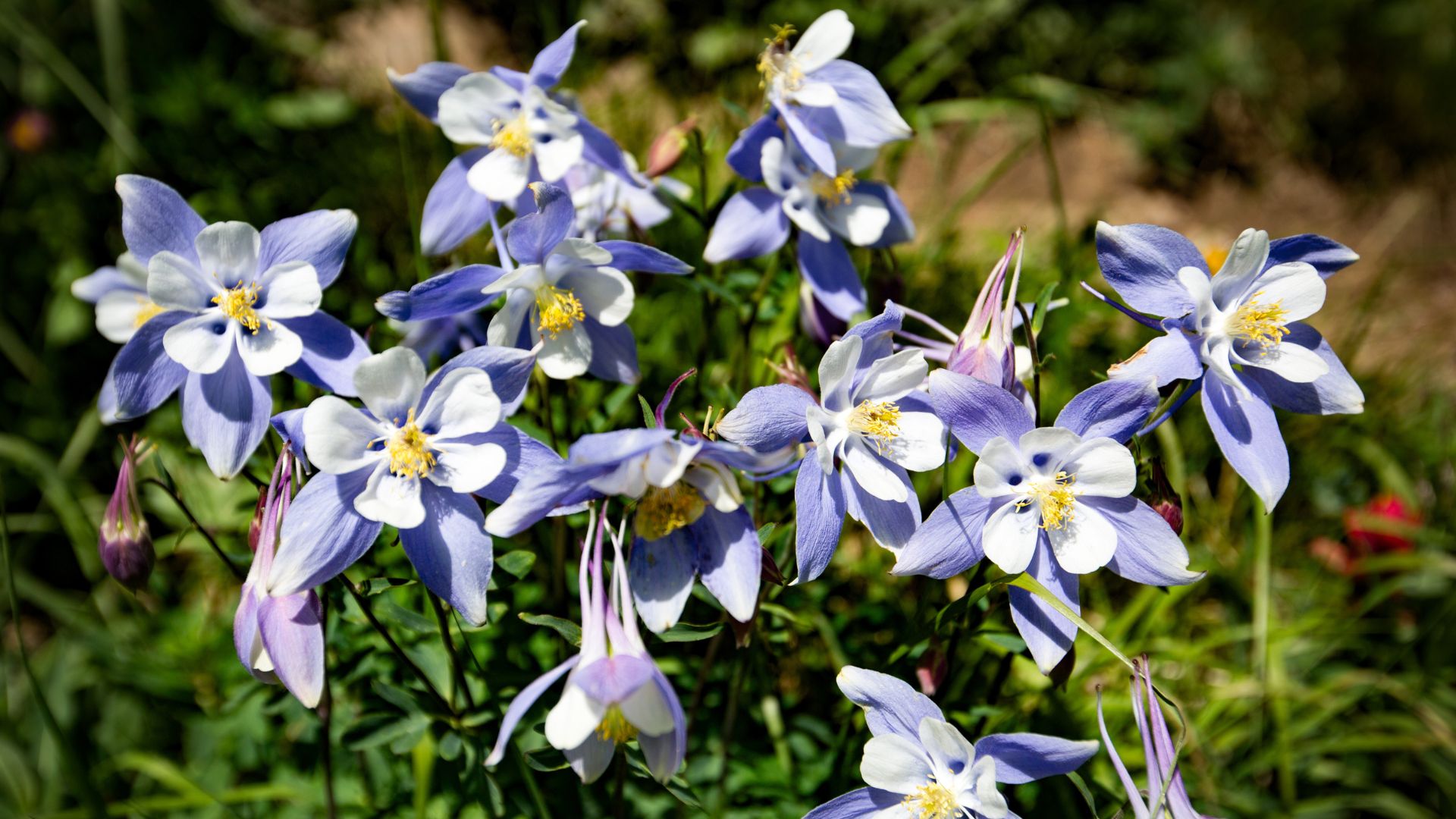
Photo: Adam Hodges
Rocky Mountain Columbine (Aquilegia caerulea) is a rare and protected blue species native to the Rockies that was first recorded on Pike’s Peak in 1820. Some say the colors of its blue outer petals represent the sky, the white central cup depicts snow, and the yellow anthers symbolize sunshine and gold mines! After winning the votes of a majority of schoolchildren, it was named their state flower in 1899.
Connecticut
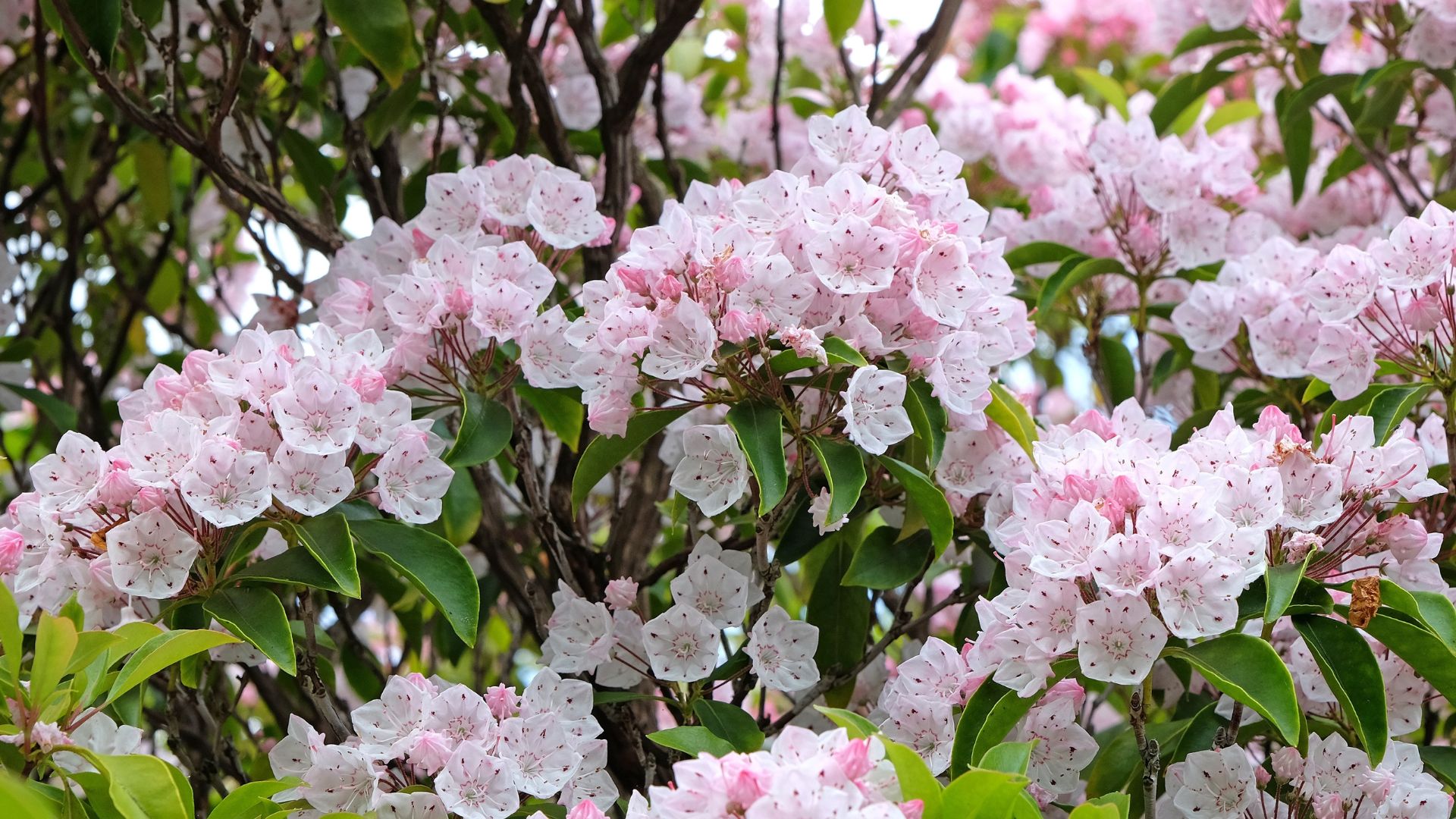
Photo: Alex Manders
Mountain Laurel (Kalmia latifolia) is a native evergreen woodland shrub that bursts forth with clusters of pink and white, 10-pointed star-shaped blossoms in late spring and early summer. It was recorded by settlers as early as 1624. Also called spoonwood since Native Americans used it to carve utensils, another name it has earned is lambkill for its poisonous nature. Even honey made from its blossoms is toxic and referred to as mad honey. Though 3,000 women supported making it the state flower, grumpy male legislators were opposed until they all were given sprigs of blossoms. It was named state flower in 1907. Mountain Laurel is also the state flower of Pennsylvania.
Delaware
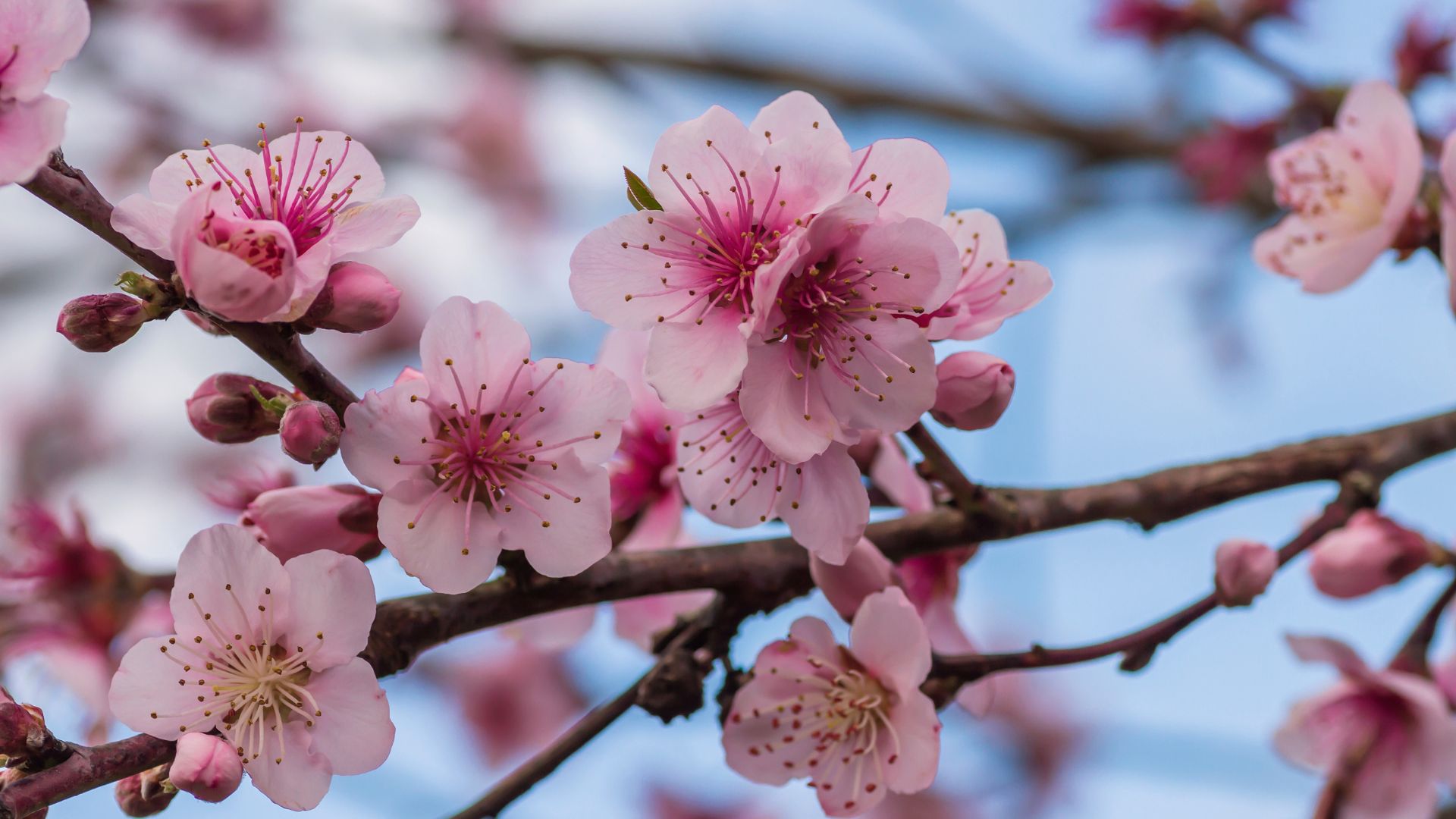
Photo:Jessica Hyde
Peach Blossoms (Prunus persica) were made the floral emblem of Delaware in 1895 when the state was home to over 800,000 peach trees! Native to China, where the blossoms symbolize a long and healthy life free from evil, the flowers appear in early spring before the trees leaf out. Even though peach orchards were hit with disease and the industry had declined by the early 1900s, Delaware was still known as the Peach State, and in 1953, the peach blossom was made the official state flower. Schoolchildren love their peaches, and in 2009, peach pie was named the official state dessert! Try our skillet peach pie recipe!
Florida
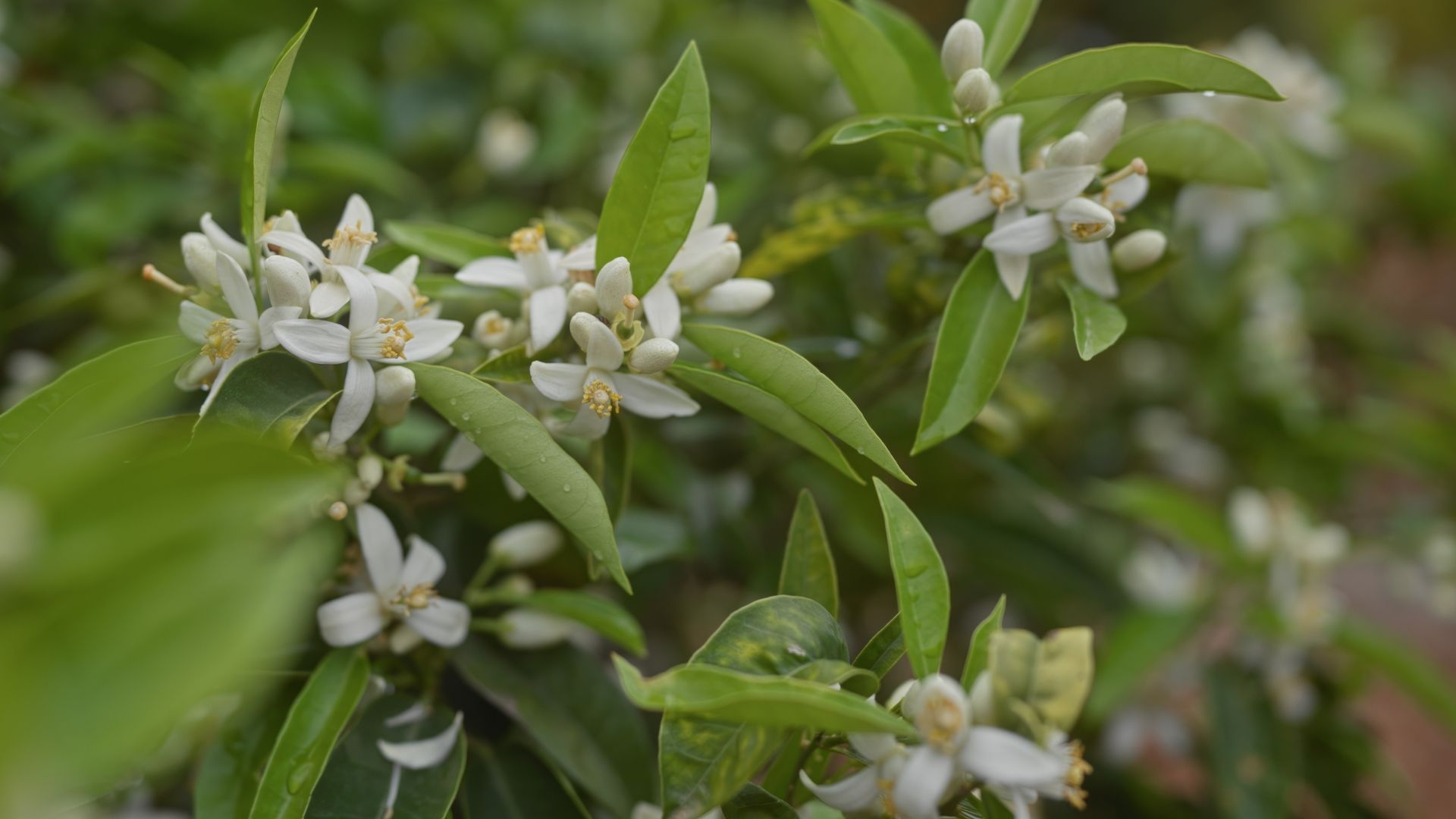
Photo: Kraken Images
Orange Blossoms (Citrus sinensis) were the natural choice for state flower in 1909 when the state had many tropical fruit groves and the citrus industry dominated state agriculture. Native to Asia, orange trees were introduced to Florida by Spanish explorers in the 1500s, and their popularity exploded. In spring, the small white flowers fill the air with their fragrance. In aromatherapy, the scent is considered to be calming and helpful in treating anxiety. Symbolizing purity and fertility they are a popular wedding flower. After tourism, oranges are the next major contributor to the state’s economy, and the orange is the official state fruit and orange juice the state drink.
Leavenworth’s Tickseed is the state wildflower.
Georgia
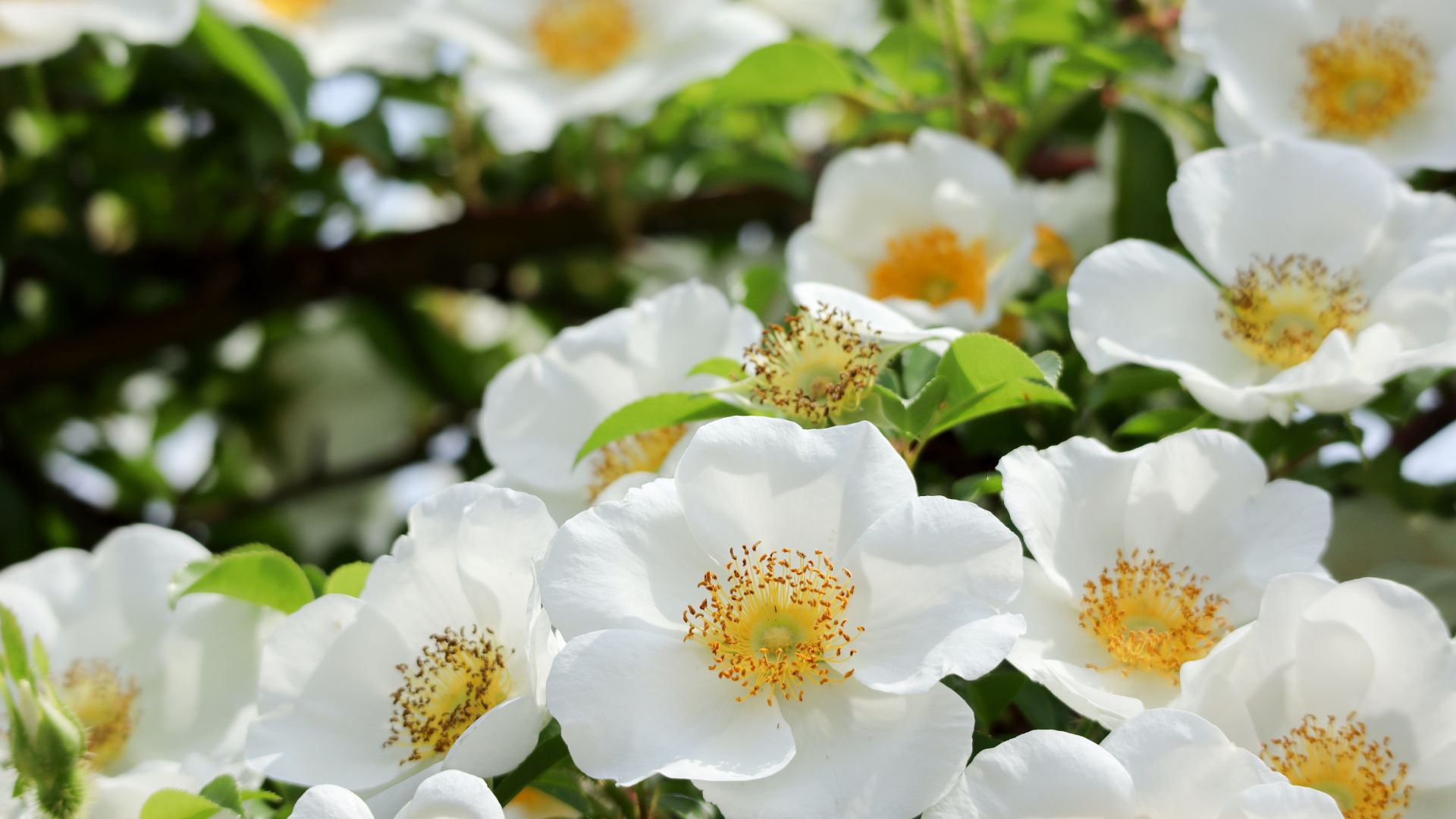
Photo: ka chi shi yo
The Cherokee Rose (Rosa laevigata) is associated with the Trail of Tears, when the native Cherokee, along with people from four other tribes, were forced from their homelands in 1830-1843 and marched west of the Mississippi to the “Indian Territory” in current-day Oklahoma. The white petals of this evergreen climbing rose symbolize the tears shed along the trail, and the yellow center represents the gold stolen from the indigenous people. The Georgia Federation of Women’s Clubs supported its choice as a state flower representing the resilience and strength of the Cherokee people, and it was made official in 1916.
Native Azaleas are the state wildflowers.
Hawaii
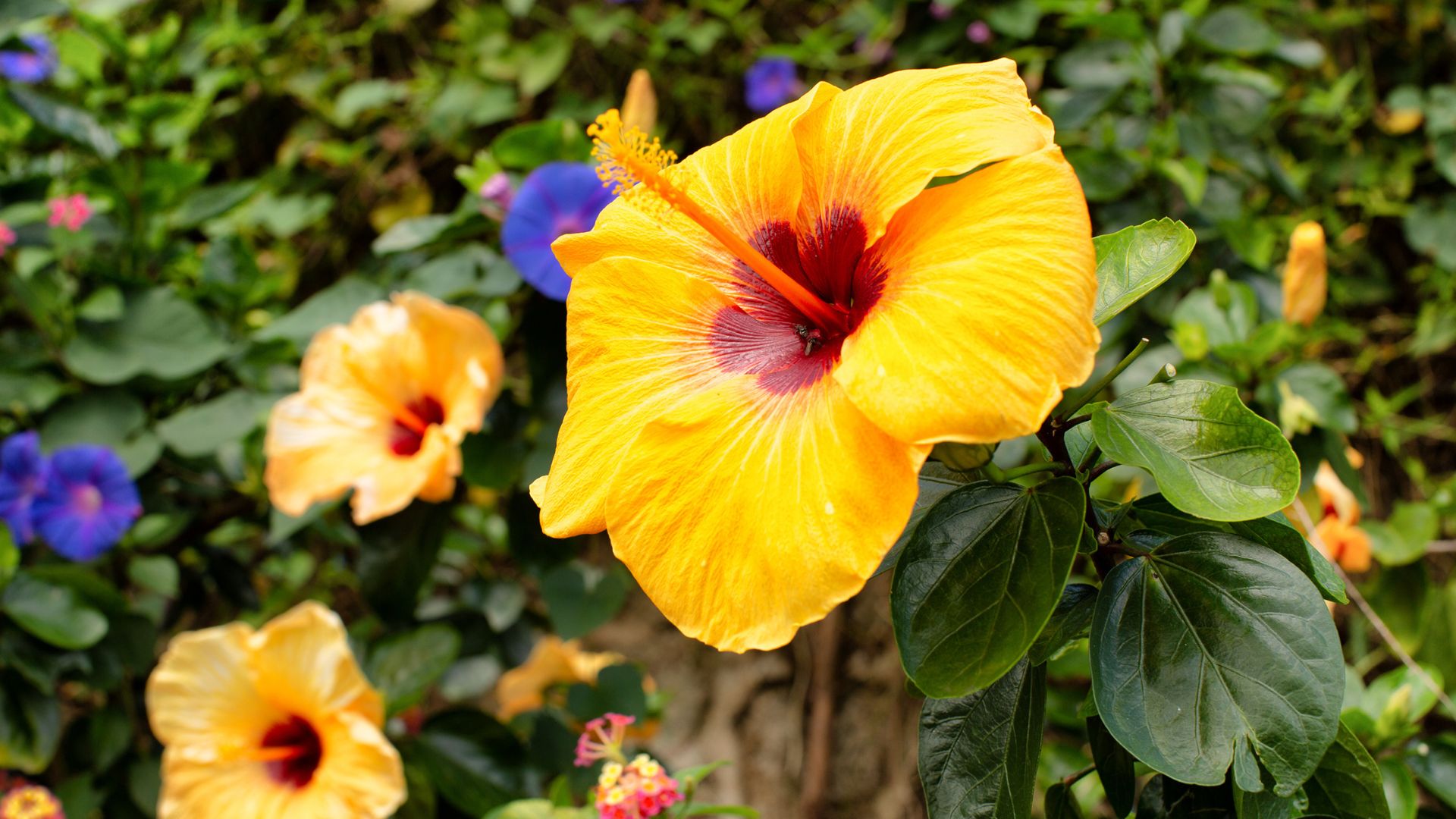
Photo: Steve Lovegrove
Yellow Hibiscus (Hibiscus brackenridgei) was named the official state flower in 1988. Rare and endangered, this native species blooms from May to July and is considered a symbol of royalty. In 1923, before Hawaii became a state, any color hibiscus, many of which are non-native, were used to represent the territory. Learn more about the beautiful flowers of Hawaii.
Idaho
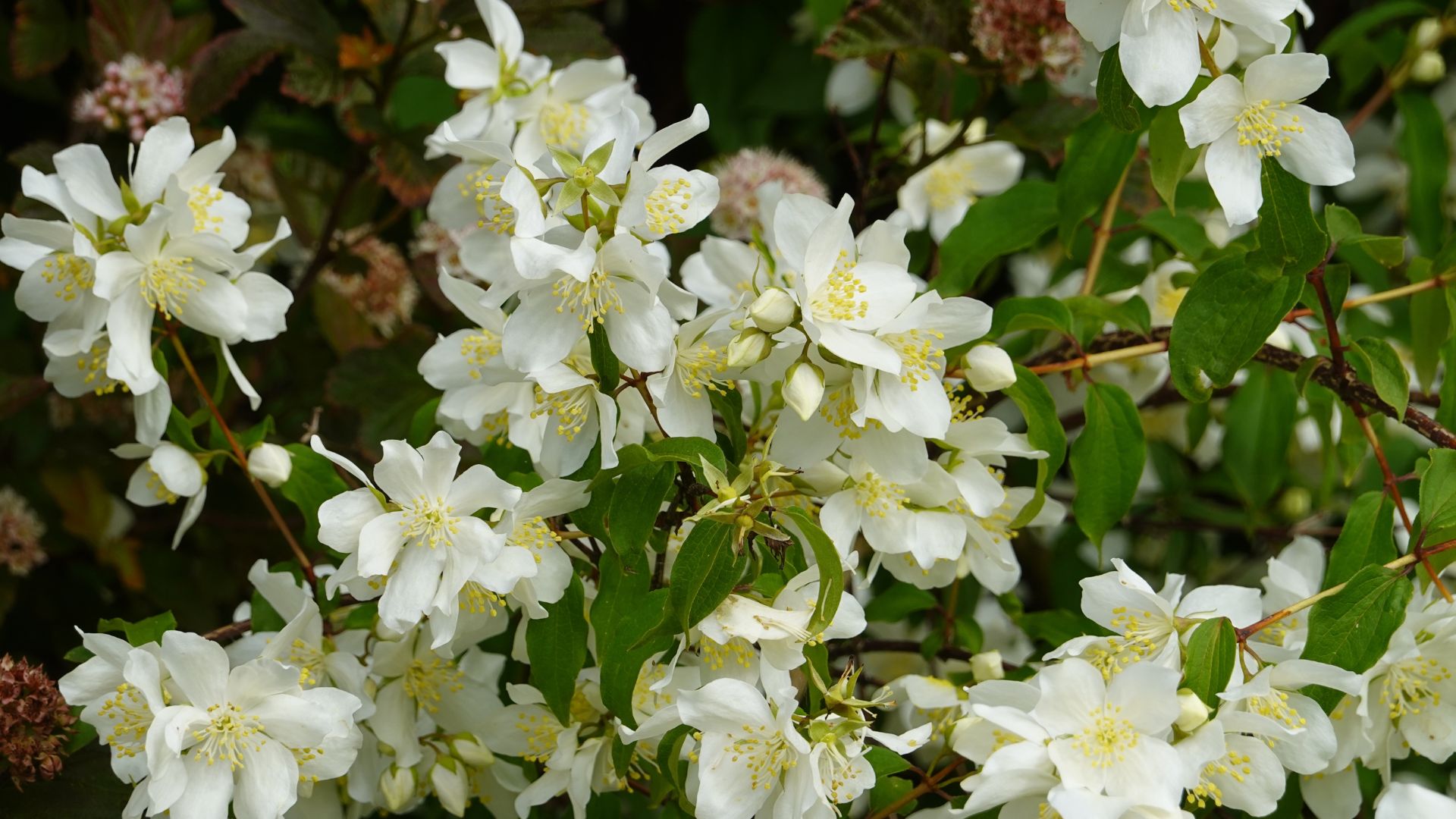
Photo: LifeisticAC
Syringa (Philadelphus lewisii), also known as Mock Orange, honors Meriwether Lewis of the Lewis and Clark expedition, who documented the fragrant flowering shrub on his travels west. The 4-6 foot tall shrub blossoms from May to June, about the same time the Chinook salmon migrate upstream to spawn. Officially named the state flower in 1931, it is also on their state seal, the only one designed by a woman.
Illinois

Violets (Viola) are a popular state emblem, but Illinois was the first to make them their official state flower. In 1907, schoolchildren chose it over wild roses and goldenrod as their favorite, and it was made official in 1908. There are 8 species of blue violets in Illinois, blossoming from April to August. Violets are sweetly scented, but one sniff at a time is all you get, and then your nose is desensitized to its fragrance for a few moments! They are also the state flower of New Jersey, Rhode Island, and Wisconsin.
Milkweed is the state wildflower.
Indiana
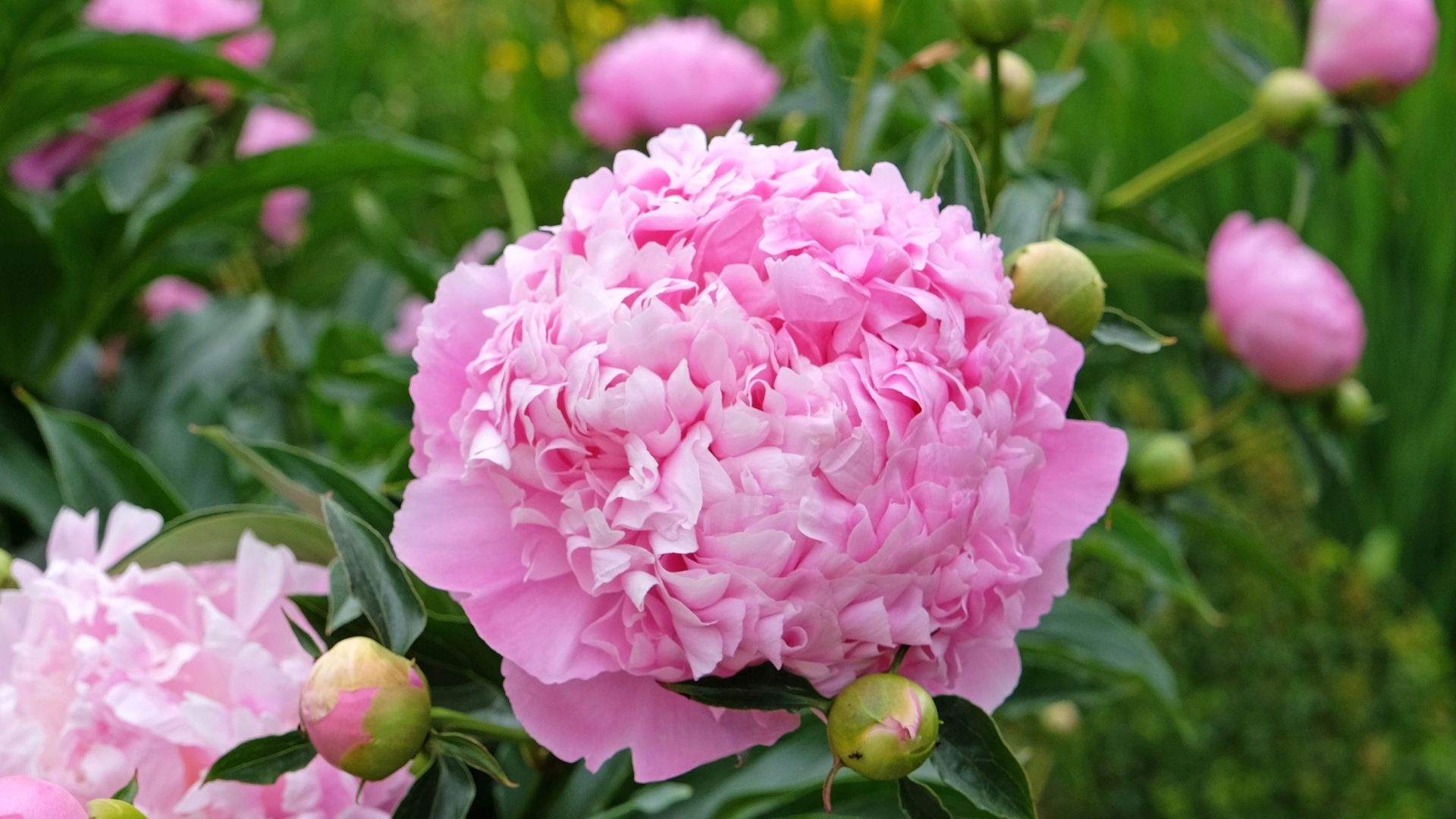
Photo: Alex Manders
The Peony (Paeonia lactiflora) was named the state flower of Indiana in 1957, but Indianans have had several in the past. In 1913, it was the carnation, then the tulip tree in 1923, and zinnias reigned from 1931 to 1957. There was much debate over replacing them with non-native peonies as the state flower, but the choice was encouraged by a state rep who just happened to own several commercial peony farms.
Iowa
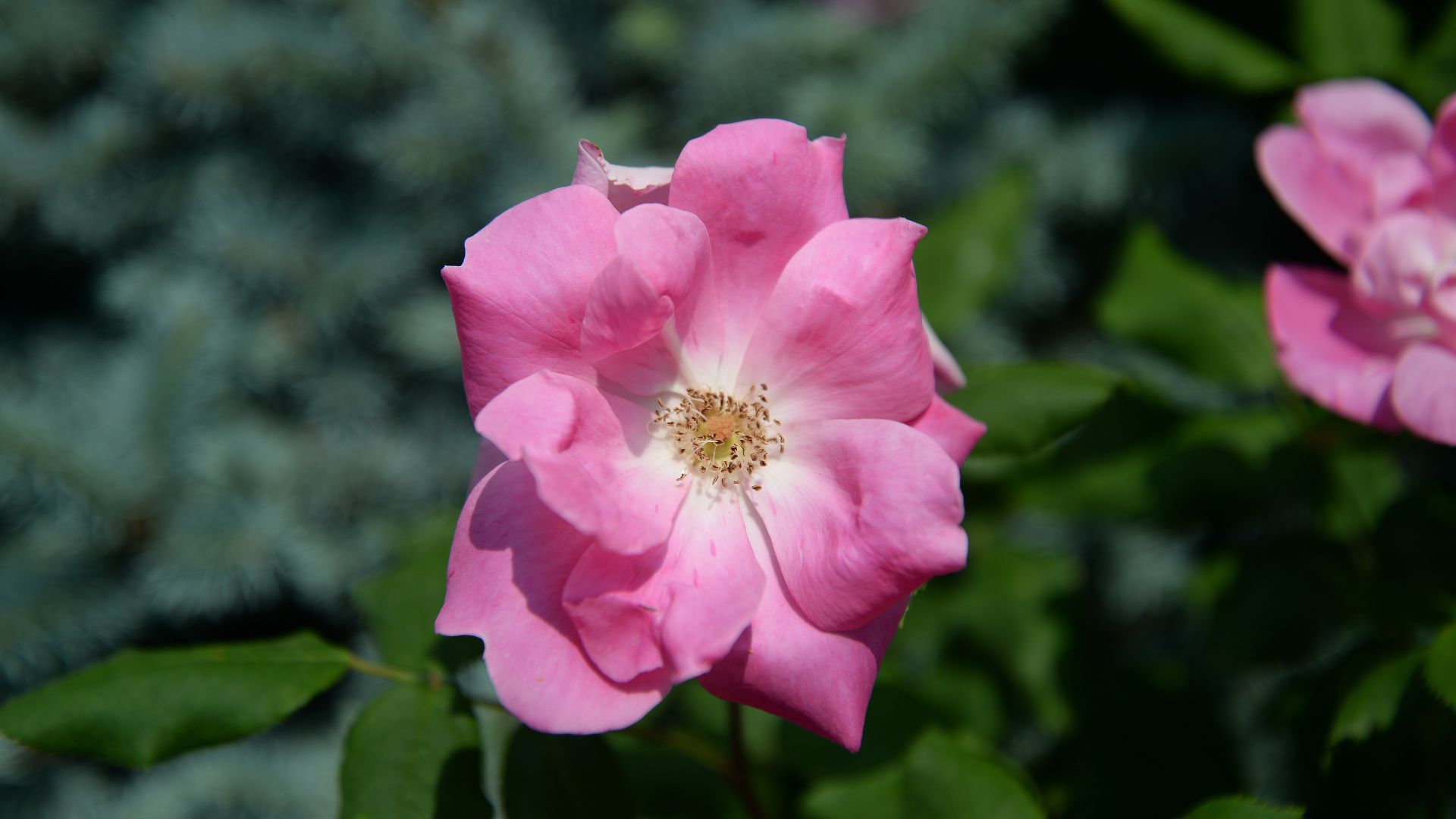
Photo: Chamferbox Pics
Prairie Rose has 5 pink petals and blooms in May. Its flower was etched onto a silver tea set made for the USS Iowa, a battleship launched in 1896. It became the official state flower in 1897. There are several wild roses found throughout the state that can be considered state flowers since legislators did not specify certain species, including Rosa Pratincola, Rosa Arkansana, Rosa Blanda, and Rosa Carolina.
Kansas
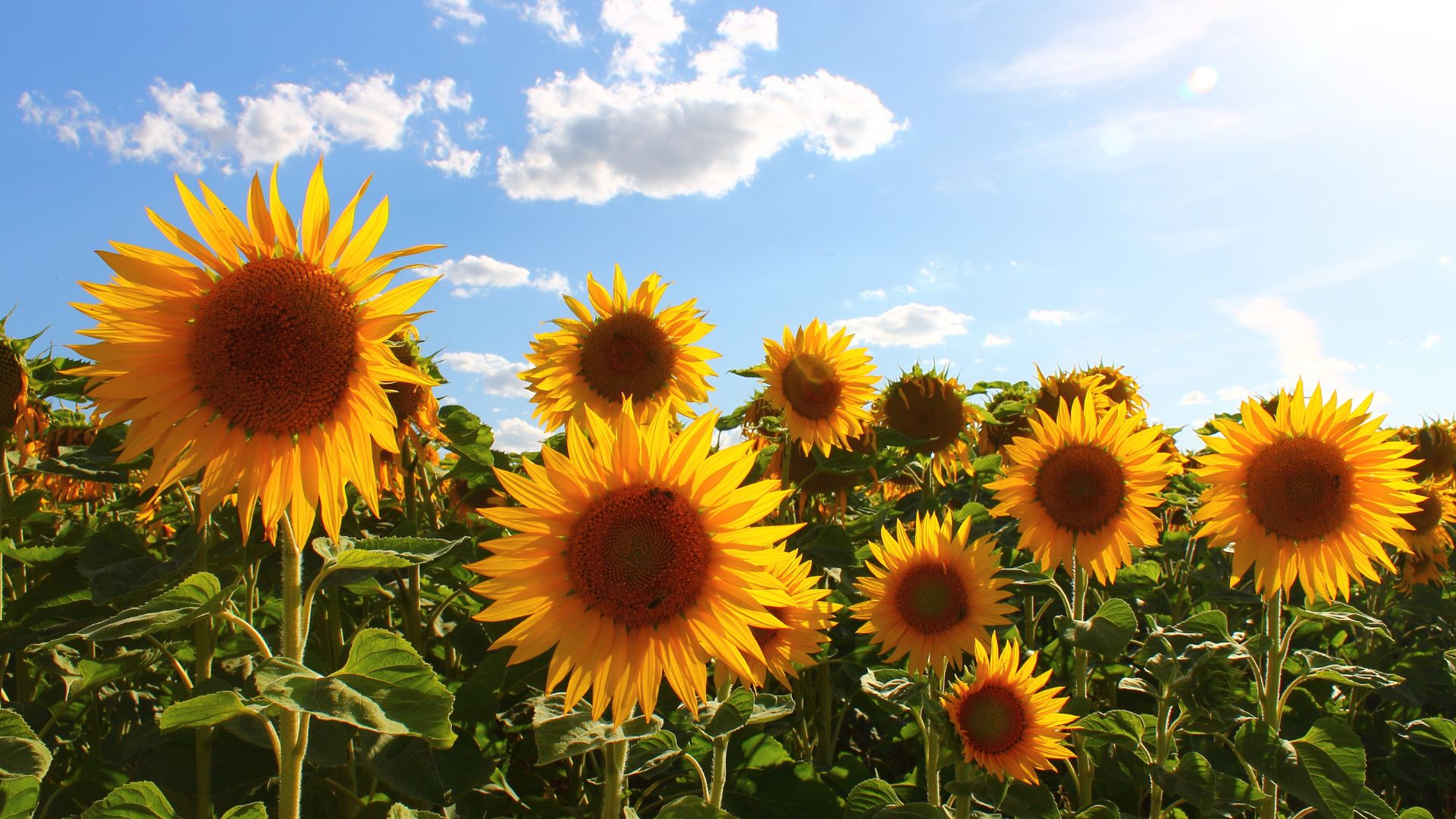
Sunflowers (Helianthus annus) are a symbol of the state’s frontier days when the native plants grew wild all over the state. In fact, as late as 1895, it was considered a noxious weed that needed to be eradicated! Native people used them for food for over 3,000 years, and today, it is an important crop, producing a popular oil used for cooking and biodiesel. Kansas, nicknamed the Sunflower State, adopted it as the state flower in 1903, and it can be found on the state quarter and flag.
Kentucky
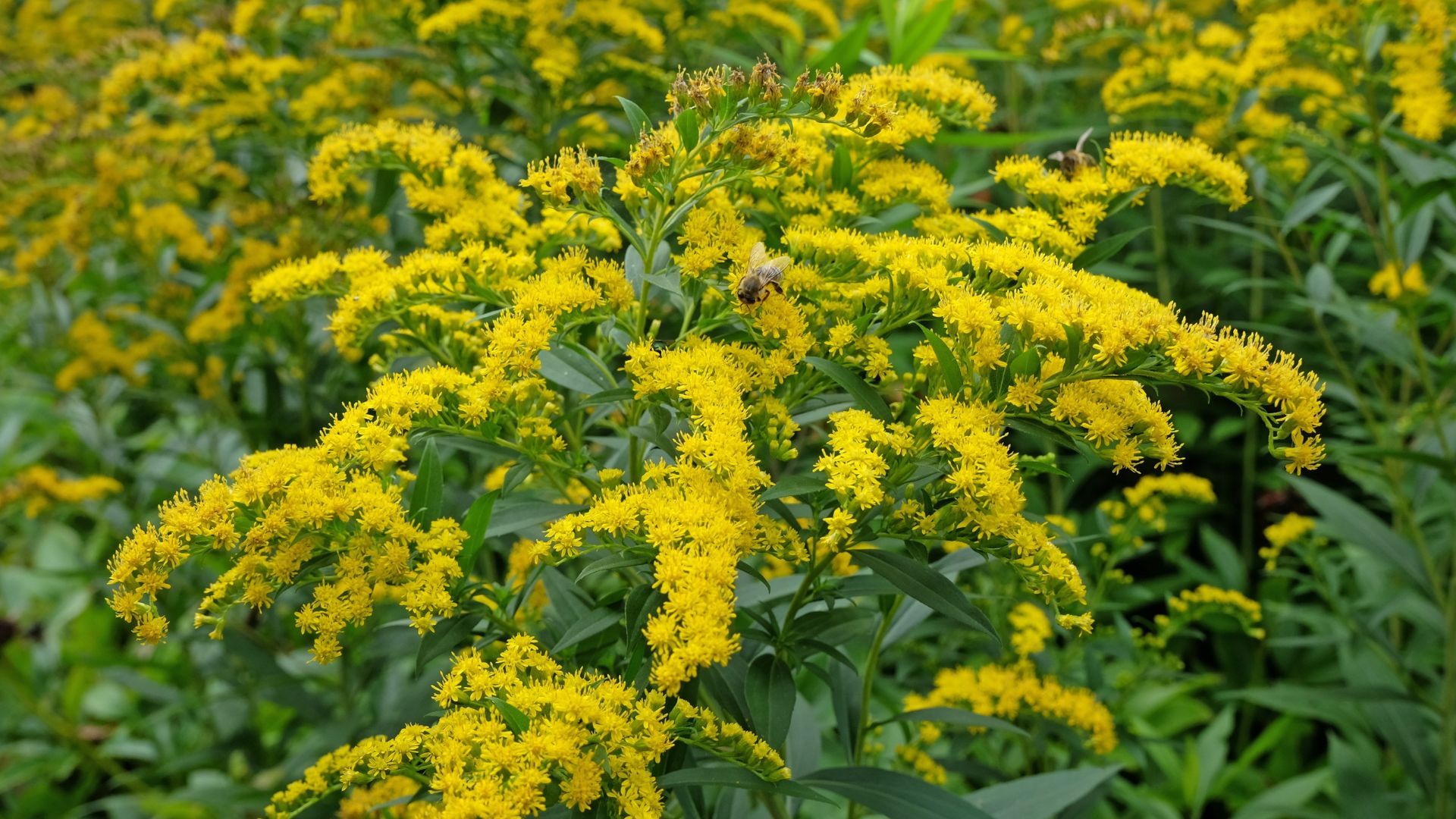
Photo: Alex Manders
Giant goldenrod (Solidago gigantea) is truly giant, growing to be 8 feet tall! It faced an uphill climb to be named the state flower since many thought it was a weed that caused allergies! Kentucky bluegrass, a non-native, was named the state flower in 1911, but garden clubs argued that it did not represent the whole state and wasn’t a flower. The US War Dept. wanted the trumpet vine, which was a symbol of the state’s militia. Finally, in 1926, the giant goldenrod was named the official state flower. It can also be seen on the state flag. Goldenrod is also the state flower of Nebraska.
Louisiana
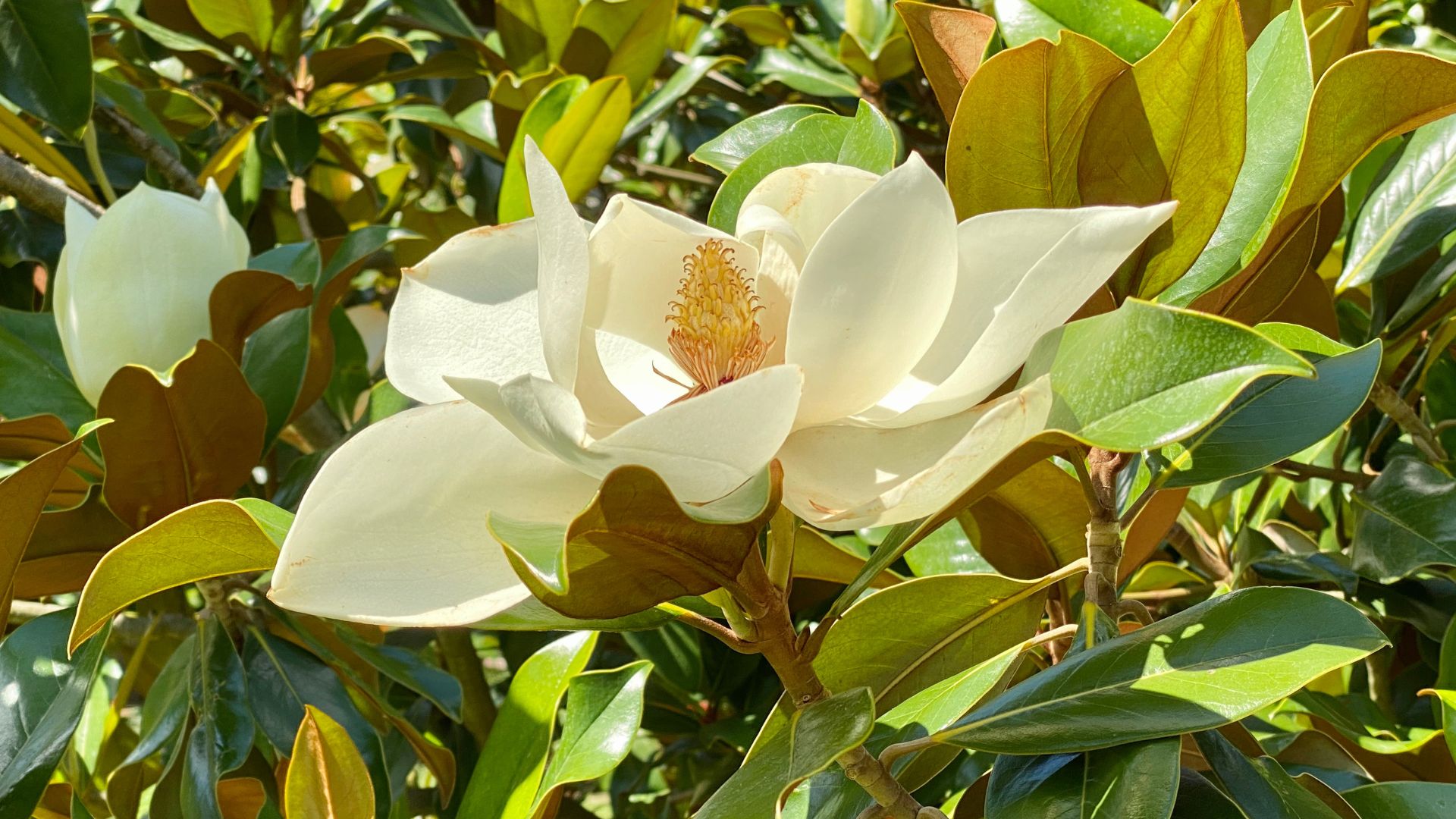
Magnolia (Magnolia grandiflora) has incredibly fragrant, showy, white waxy flowers in April. There is an abundance of these tall evergreen trees around the state. Planting one is supposed to bring you good luck! They were named the official state flower in 1900. Magnolias are also the state flower of Mississippi.
Louisiana Iris is the state wildflower.
Maine
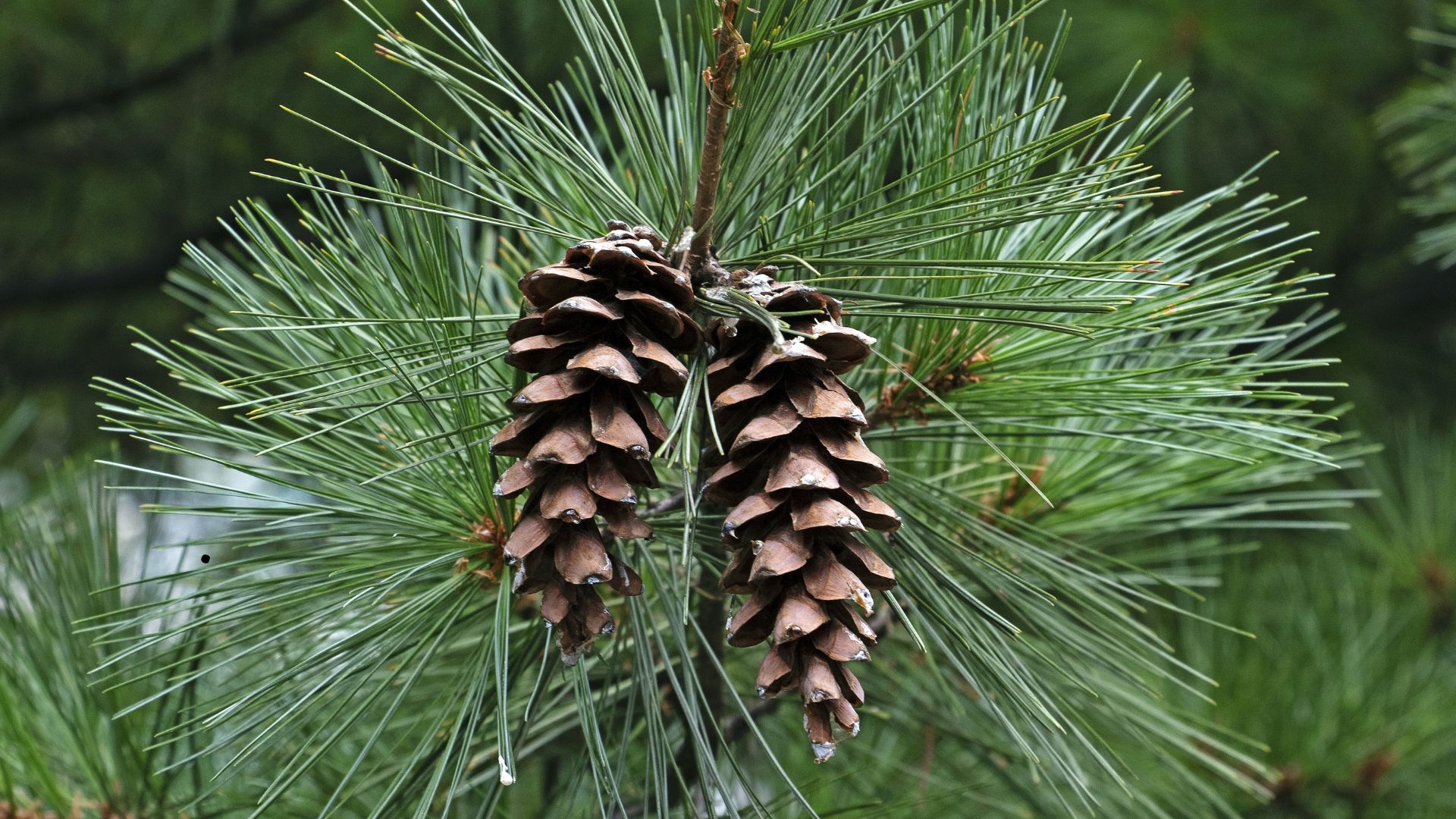
Photo: Stock for You
The White Pine Cone and Tassel (Pinus strobus) are the closest thing to a flower on a pine tree, so it was the obvious choice for the state’s floral emblem in 1895 when pitted against apple blossoms and goldenrod. Eastern white pine grows in abundance throughout the state, and the lumber industry has played a major part in its economy.
Maryland
.jpg)
Black-eyed Susans (Rudbeckia hirta) are native to the eastern US and can be seen blooming in abundance from May to August along Maryland’s roadsides, in fields, gardens, and parks. Named the official state flower in 1918, it is also the floral emblem of the Preakness Stakes horse race. One of the jewels in the Triple Crown, its official drink is called the Black-eyed Susan - made with a base of vodka, rum, and orange juice - and the race winner is draped with a blanket of Black-eyed Susan blossoms.
Massachusetts
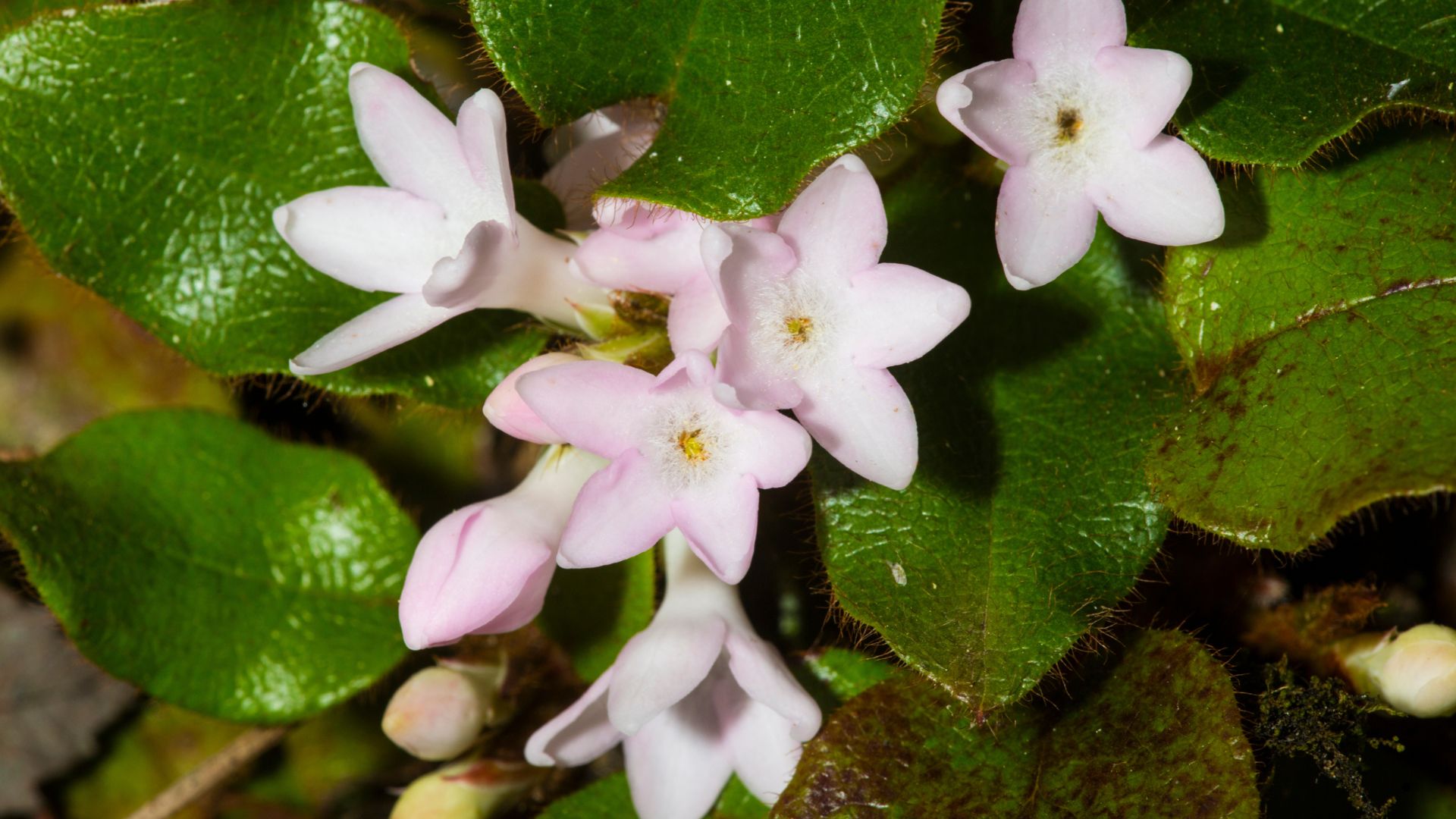
Photo: Jeff Holcombe
Mayflowers (Epigaea repens) are one of the first flowers to bloom in the spring. Its low-growing, evergreen runners can be as long as 15 feet, and its tiny white blossoms are very fragrant. A tribute to the famous ship that landed at Plymouth Rock in 1620, school children voted 2 to 1 for mayflowers over water lilies as state flower in 1918. Once over-harvested for wreath making, they have been protected since 1925 – no digging or picking, just enjoy them in the wild!
Michigan
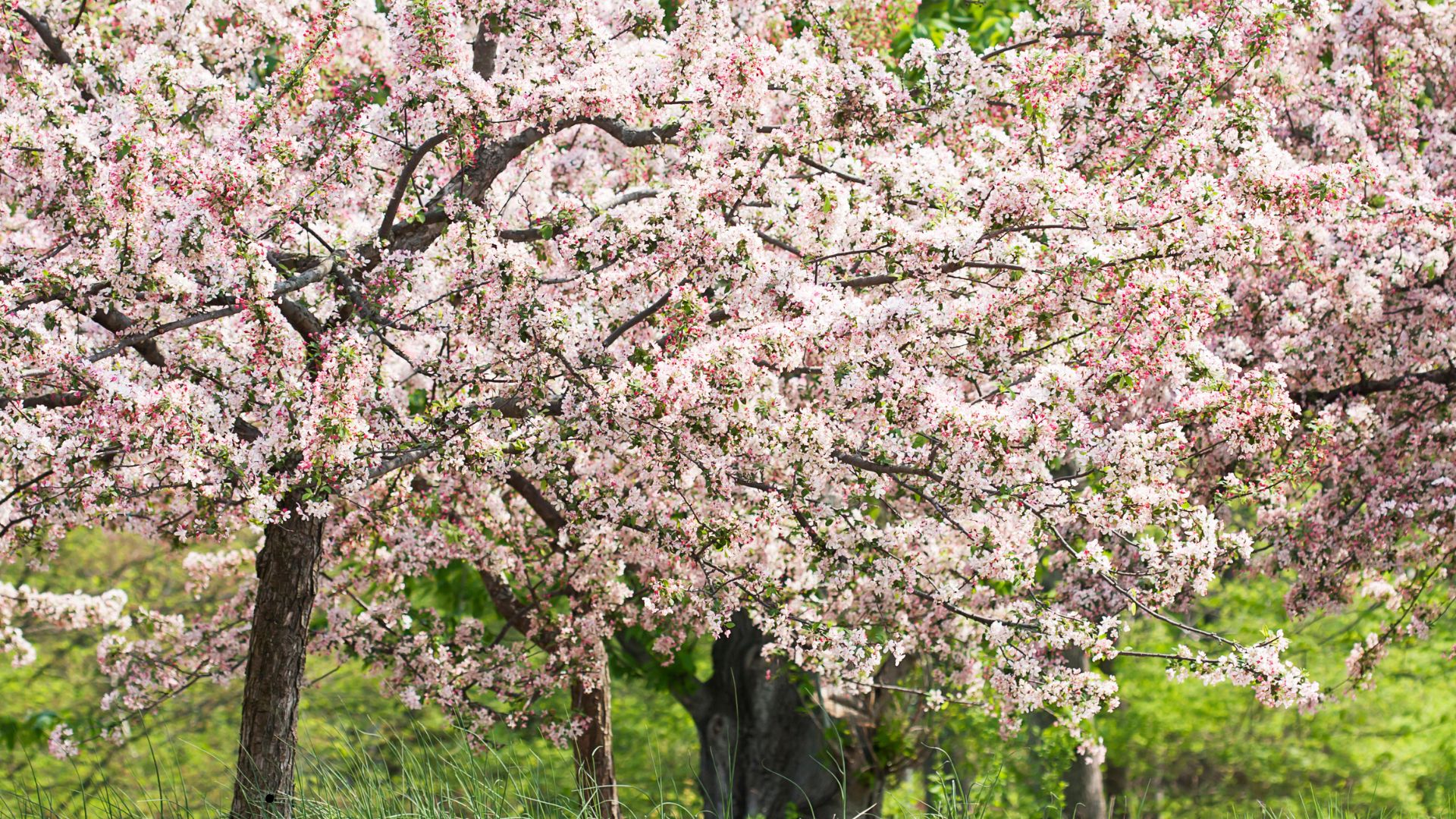
Photo: Patty_C
Crabapple blossoms (Malus/Pyrus coronaria) have fragrant pink and white flowers that draw in bees and native pollinators. Often planted near commercial orchards, they are an important aid for pollination. Apples are a major crop in the state, and the annual Blossomtime Festival is one of the traditional celebrations. After its appearance as the state’s floral emblem at the 1893 World’s Fair, the Apple Blossom was named the official state flower in 1897. It is also the state flower of Arkansas.
Dwarf Lake Iris is the state wildflower.
Minnesota
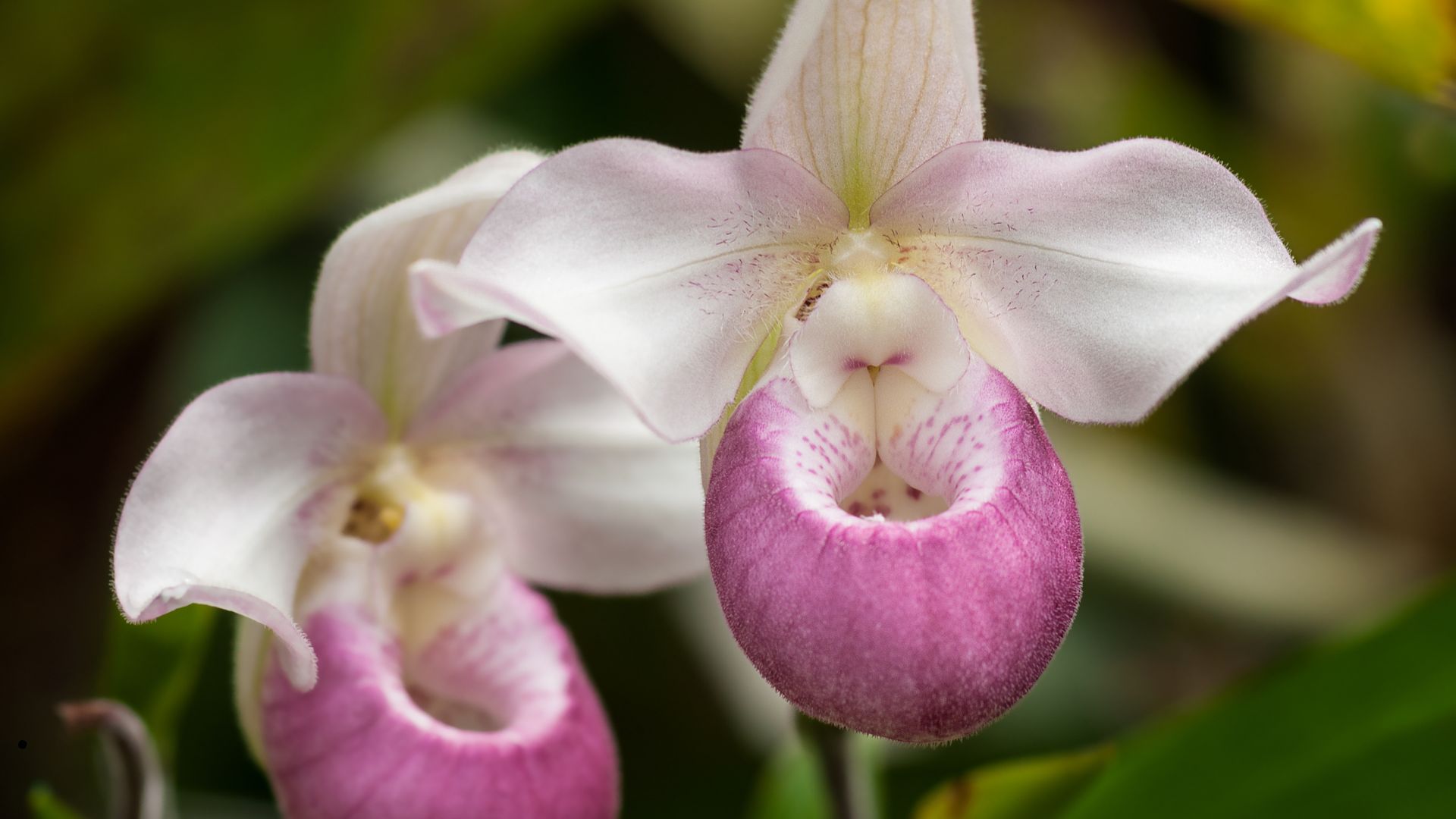
Photo: H. Kuchera
Showy Lady’s Slipper (Cypripedium reginae) is a native orchid with delicate-looking pink and white flowers. They bloom in damp, partly shady wetlands from late June to early July. Slow growers, it can take up to 16 years to start producing flowers, but the plants are long-lived. If not disturbed, they can last up to 100 years! Protected by state law since 1925, it is illegal to pick or dig up these rare plants. They were named the state flower in 1902
The Lady Slipper means capricious beauty in the language of flowers.
Mississippi
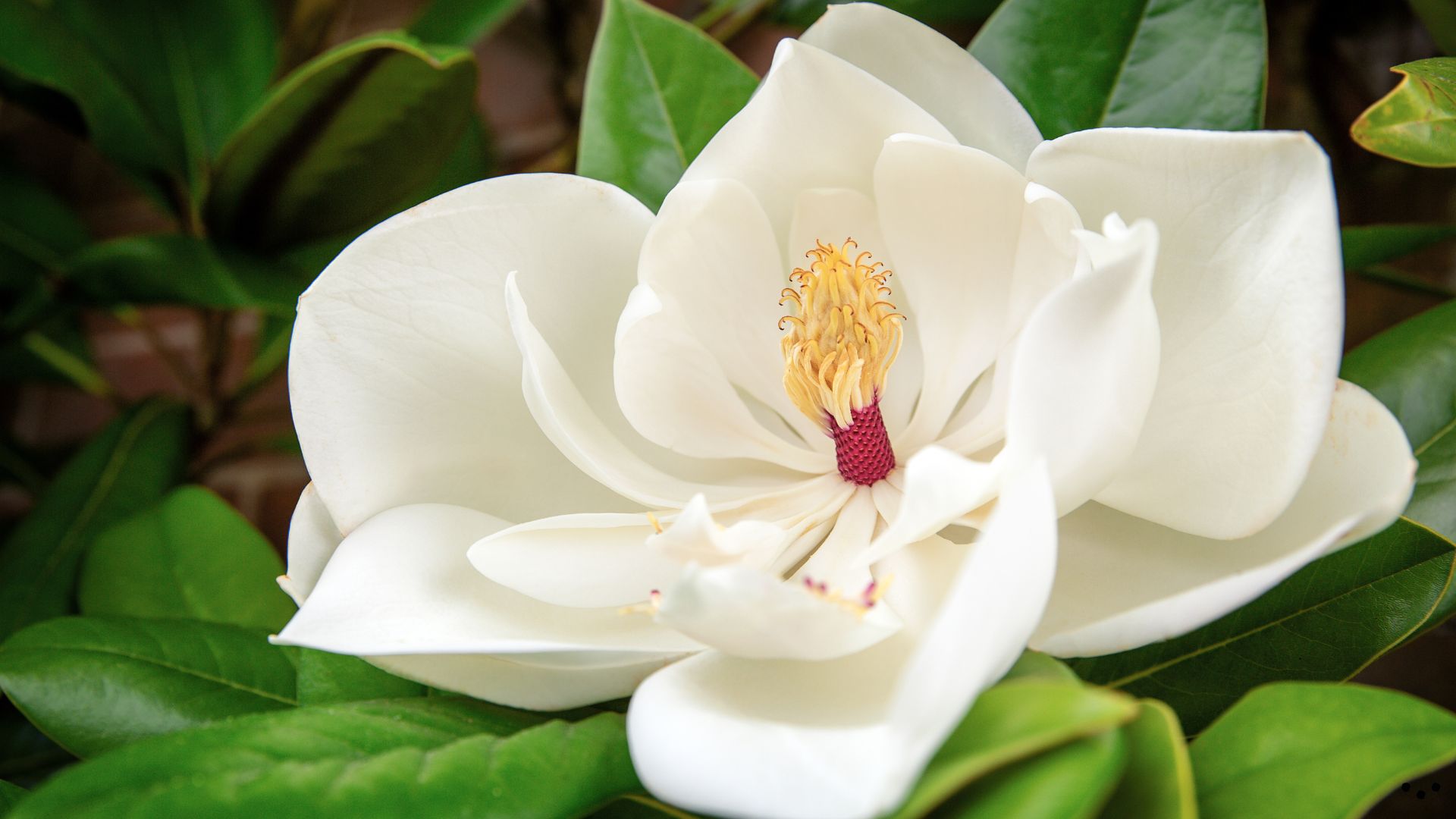
Photo: Rixie
Magnolia (Magnolia grandiflora) blossoms are extremely fragrant, creamy white, cup-shaped flowers that can be as large as 15 inches across! In 1900, when school children voted for their favorite to represent the state, the Magnolia blossom received over 3 times as many votes as the cotton blossom and cape jasmine. It was finally made the official state flower in 1952. The magnolia was chosen as the state tree in 1938 and magnolias grace the state quarter and the state flag, only natural since Mississippi is known as the Magnolia State. Magnolias are also the state flower of Louisiana.
Missouri

Photo: Romioshots
Hawthorn (Crataegus spp.) is a small native tree that bears clusters of lovely white blossoms in the spring, followed by red fruits called haws, which can be used to make a tasty jelly. 75 species of hawthorn can be found growing throughout the state under widely varying conditions. Often associated with the heart, hawthorn is used for heart health in herbal medicine, and according to Celtic lore, it can also mend a lovelorn broken heart. Mythical giant Paul Bunyan is said to have used the tree’s thorny trunk as a back scratcher! It is also one of the May birthflowers.
It beat out the apple blossom and the daisy as the official state flower in 1923.
Montana
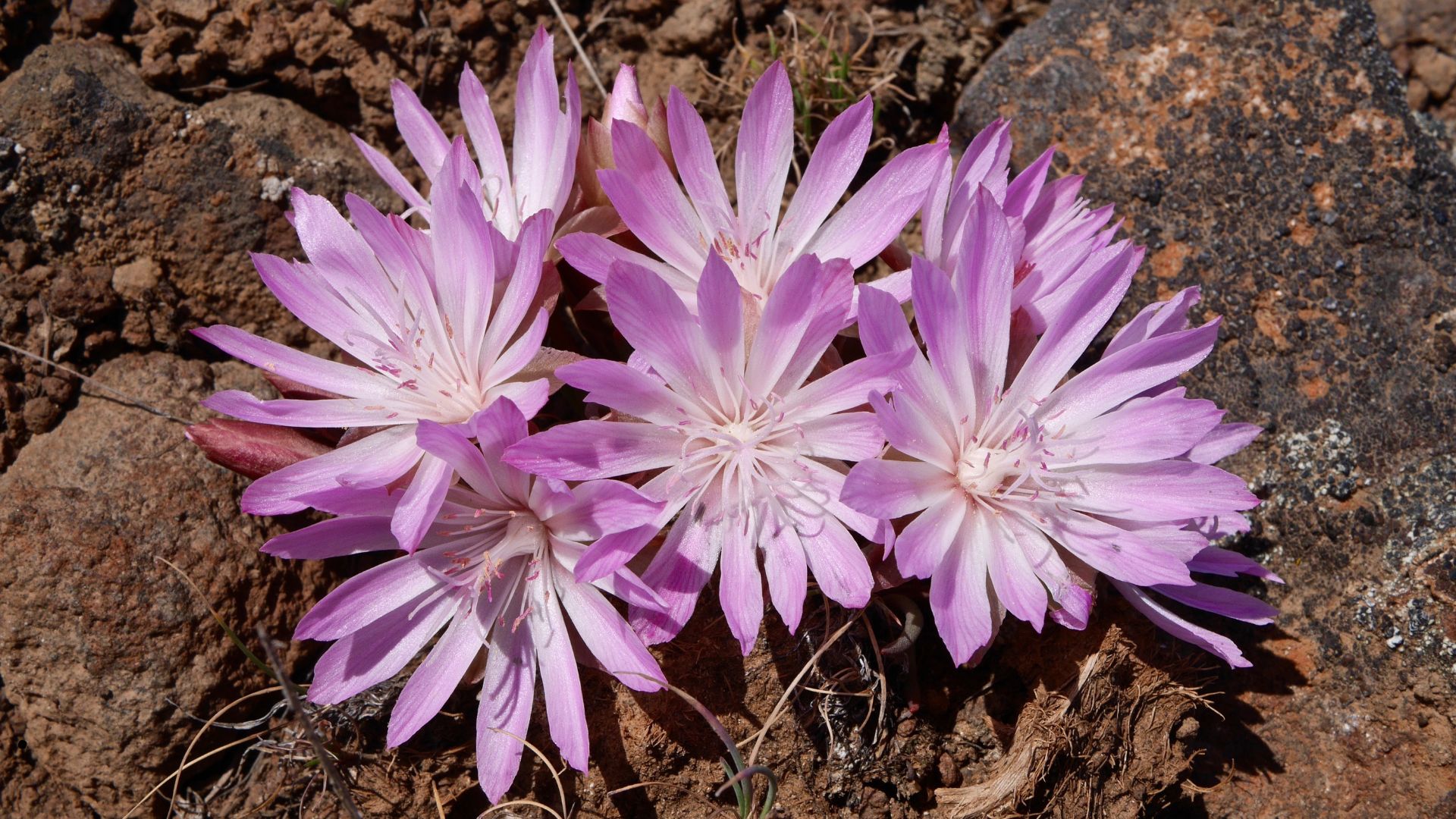
Photo: Marina Poushkina
Bitterroot (Lewisia rediviva) is a low-growing, native perennial with delicate-looking lavender flowers that have earned the nickname “Resurrection Flower” for its ability to survive extended periods of drought and bounce back into bloom when rains return. The fleshy taproots have been part of the diet of native people in the region for centuries, and the Shoshone thought the red center of the root had the power to stop a bear attack! Its Latin name honors Meriwether Lewis, who recorded the plant in 1805, a year without water, during his trek west with William Clark and Sacajawea. In 1894, votes were collected statewide, and Bitterroot beat out 32 other flowers, including evening primrose and wild rose, to be the overwhelming winner. It was named Montana’s official state flower in 1895. A mountain range, valley, and river also bear the name Bitterroot.
Nebraska

Photo: Diane Hill
Goldenrod (Solidago) is a native wildflower and important pollinator plant that blossoms throughout the state from July-Oct. There are many species of goldenrod, usually growing 2-3 feet high, but there is a giant goldenrod that tops out at 7 feet tall! A valuable medicinal plant for native tribes who historically used it to treat diarrhea, kidney stones, flu, and fevers and to counteract love potions! It was chosen as Nebraska’s state flower in 1895 for the way it overcomes adversity and is still able to thrive – like the early pioneers. A goldenrod is also the state flower of Kentucky.
Nevada
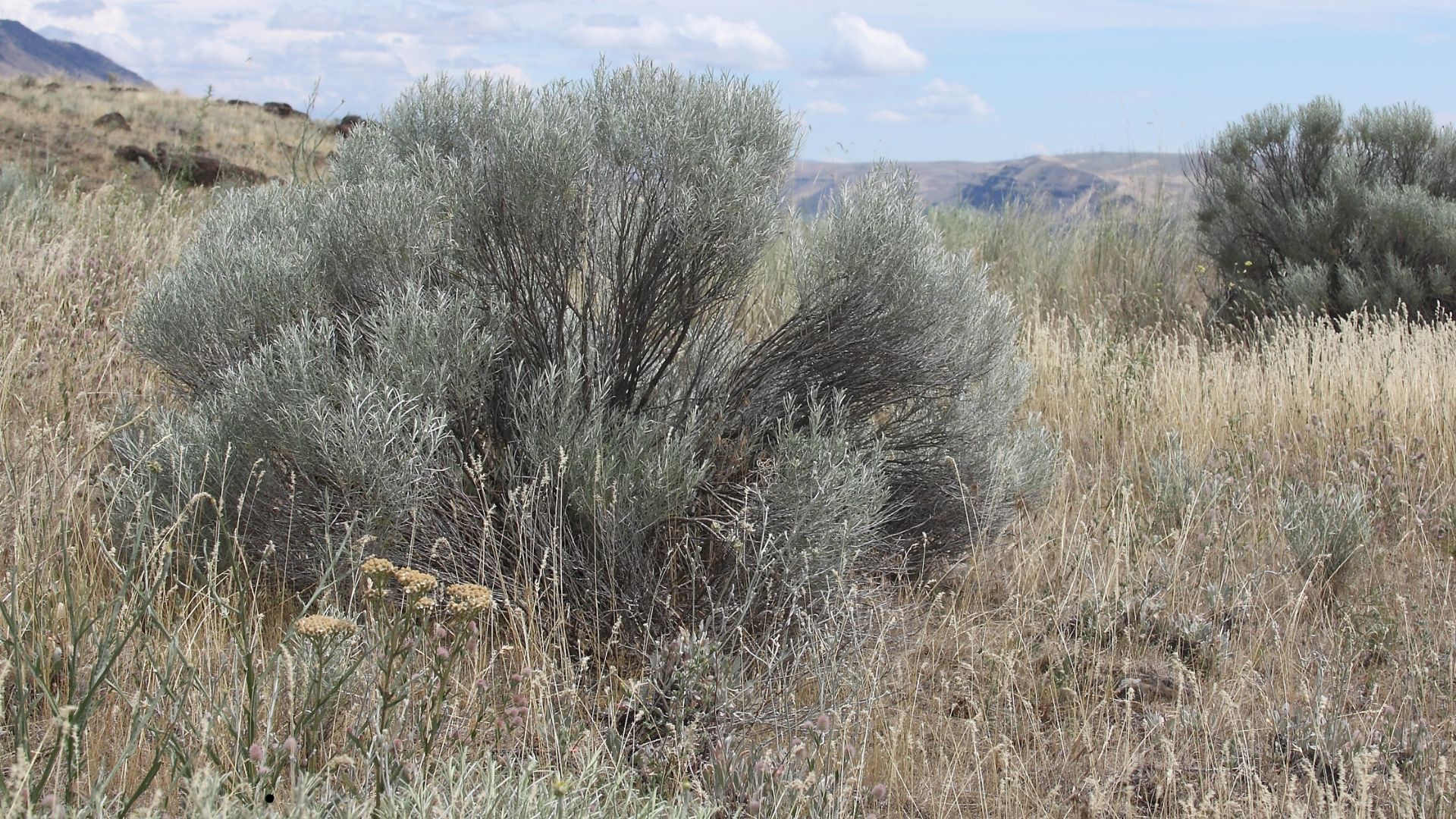
Photo: Dave Logan
Sagebrush (Artemisia tridentate or trifida) is an aromatic, silvery-green native shrub that bears small white or yellow flowers in late summer. It grew so dense in places that it actually slowed down cattle drives and popularized the use of chaps to protect the cowboys’ legs as they tried to ride through it. One of Nevada’s many nicknames is the Sagebrush State, and the plant appears on the state flag and state quarter and is mentioned in the state song. Chosen as the state flower in 1917, it was finally made official in 1967. Once covering half the state, due to climate change and habitat loss, sagebrush is becoming a threatened species in Nevada.
New Hampshire

Photo: Anastasia Collection
Purple Lilacs (Syringa vulgaris) were brought to the New World from England and planted at the Portsmouth home of Gov. Benning Wentworth in 1750. Descendants of those original plants are still growing there. In 1919, the search for a state flower pitted the purple lilac against the apple blossom, purple aster, buttercup, evening primrose, goldenrod, mayflowers, wild rose, and wood lily. The purple lilac prevailed and was chosen as a symbol of the hardy character of the people of the state. It was named the official flower of New Hampshire that year. Reliably blossoming each spring, lilac flowers have the most delicious fragrance, and the plants can survive temperatures down to 35 degrees below zero, actually needing a cold period to initiate bloom.
Lady Slipper is the state wildflower.
New Jersey
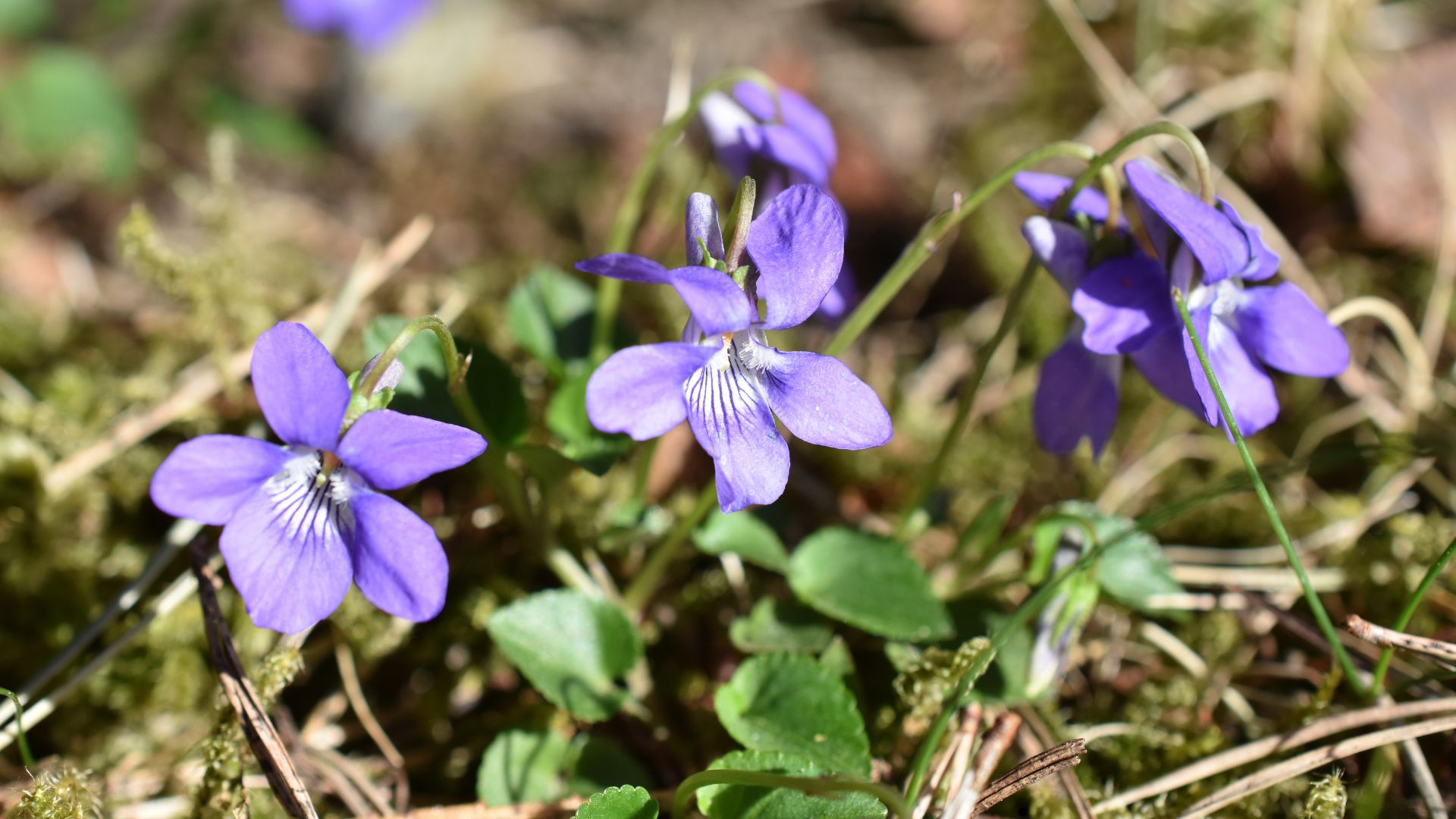
Photo: HHelene
Common Meadow Violet (Viola sororia) blooms from March to June throughout the state in colors ranging from blue and purple to white. The blossoms are edible and rich in vitamins A and C. It was originally proposed as the state flower in 1913, but a new session of the legislature came into power before it was decided on. Garden clubs brought it up for a vote again in 1971, and it was made official. Violets are also the state flower of Rhode Island, Illinois, and Wisconsin.
New Mexico
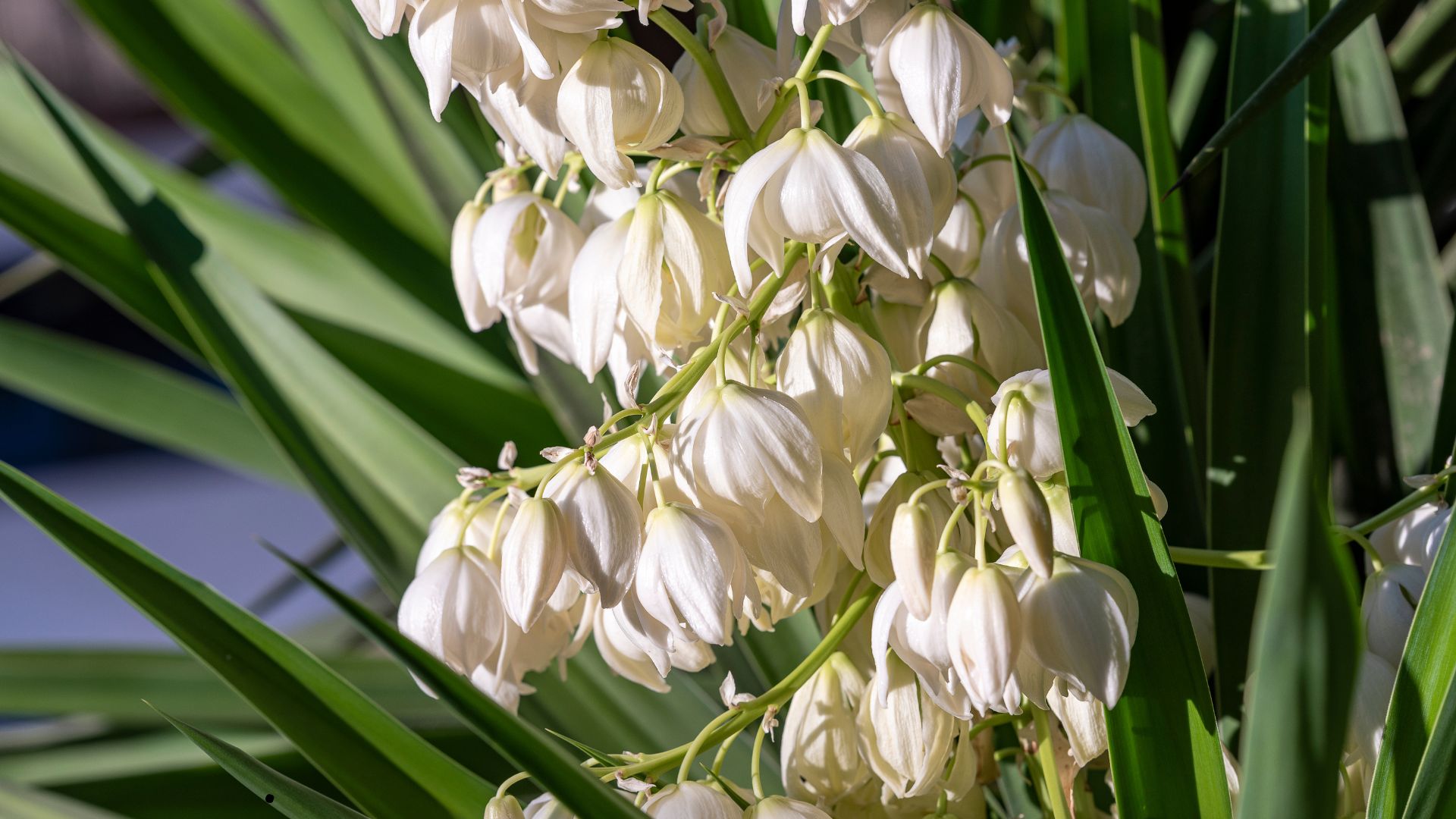
Photo: zilber42
Yucca is native to hot, dry places. Its bell-shaped, white flowers are at their peak in May and June. Schoolchildren chose it as the state flower in 1923, and women’s clubs agreed, so legislators made it official in 1927. There are many species of yucca, and the legislature did not specify a certain one, so any yucca will do. If you run out of soap or shampoo in the desert, yucca roots are perfect substitutes, which explains the common names of soapweed and soaptree.
New York
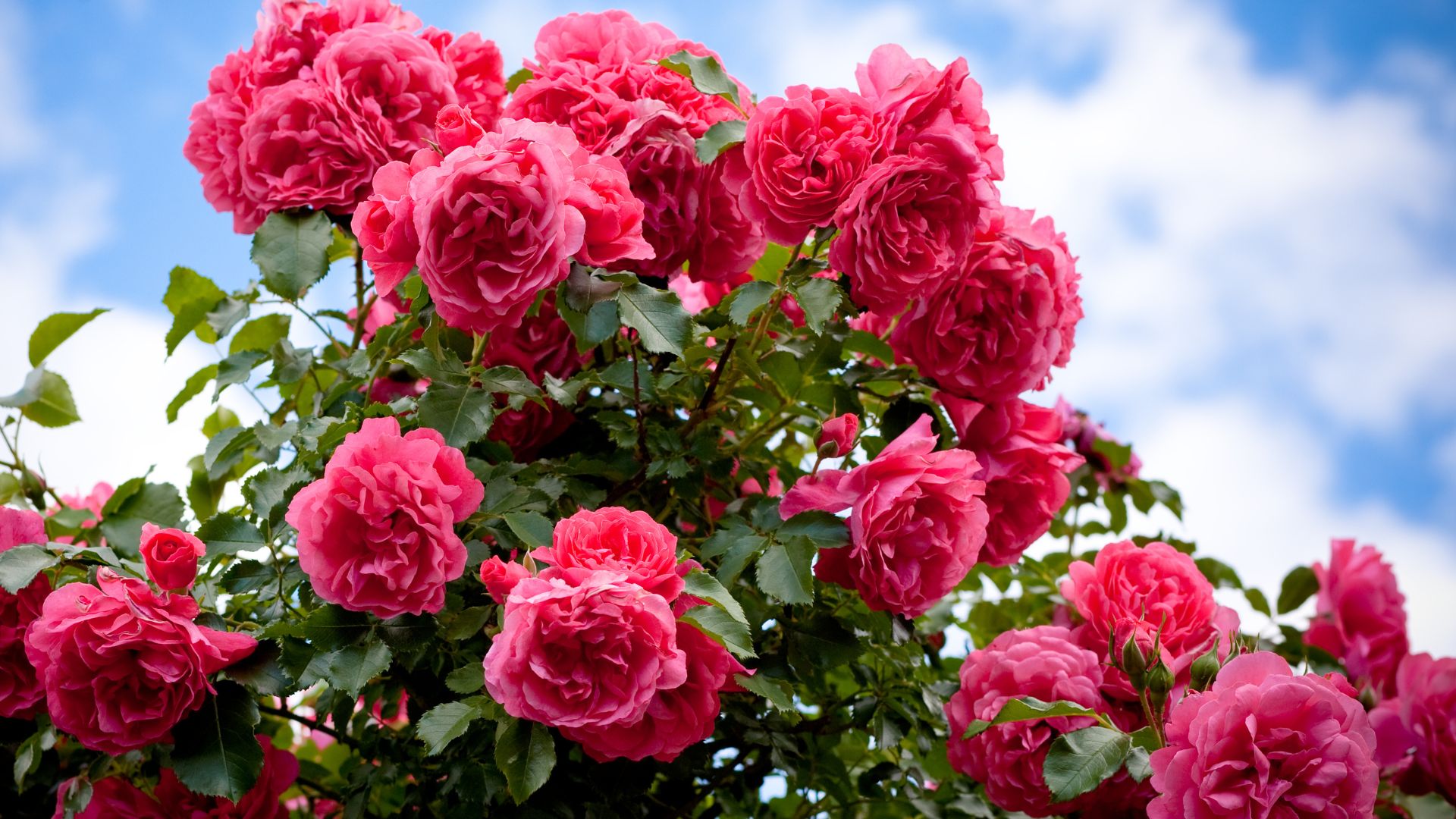
Photo: Alexey Zel
Roses are also our national flower and a symbol of love. Four other states – Iowa, Georgia, North Dakota, and Oklahoma - have chosen some type of rose as their state flower, too. Any species of rose in any color will do for New York. They started looking for a state flower in 1890 by asking school kids to vote but did not decide on roses until 1955.
North Carolina

Photo: R. Biedermann
Native dogwood (Cornus florida) petals are actually wide bracts that lure pollinators to its tiny true flowers in the center of the blossom. In North Carolina, you know that spring is here when the omnipresent dogwoods begin to bloom in April. It didn’t take much work for the North Carolina General Assembly to make the dogwood blossom the state’s official flower in 1941. Several communities around the state hold family-friendly Dogwood Festivals each April to celebrate all things dogwood! It is also the state flower of Virginia.
Carolina Lily is the state wildflower.
North Dakota
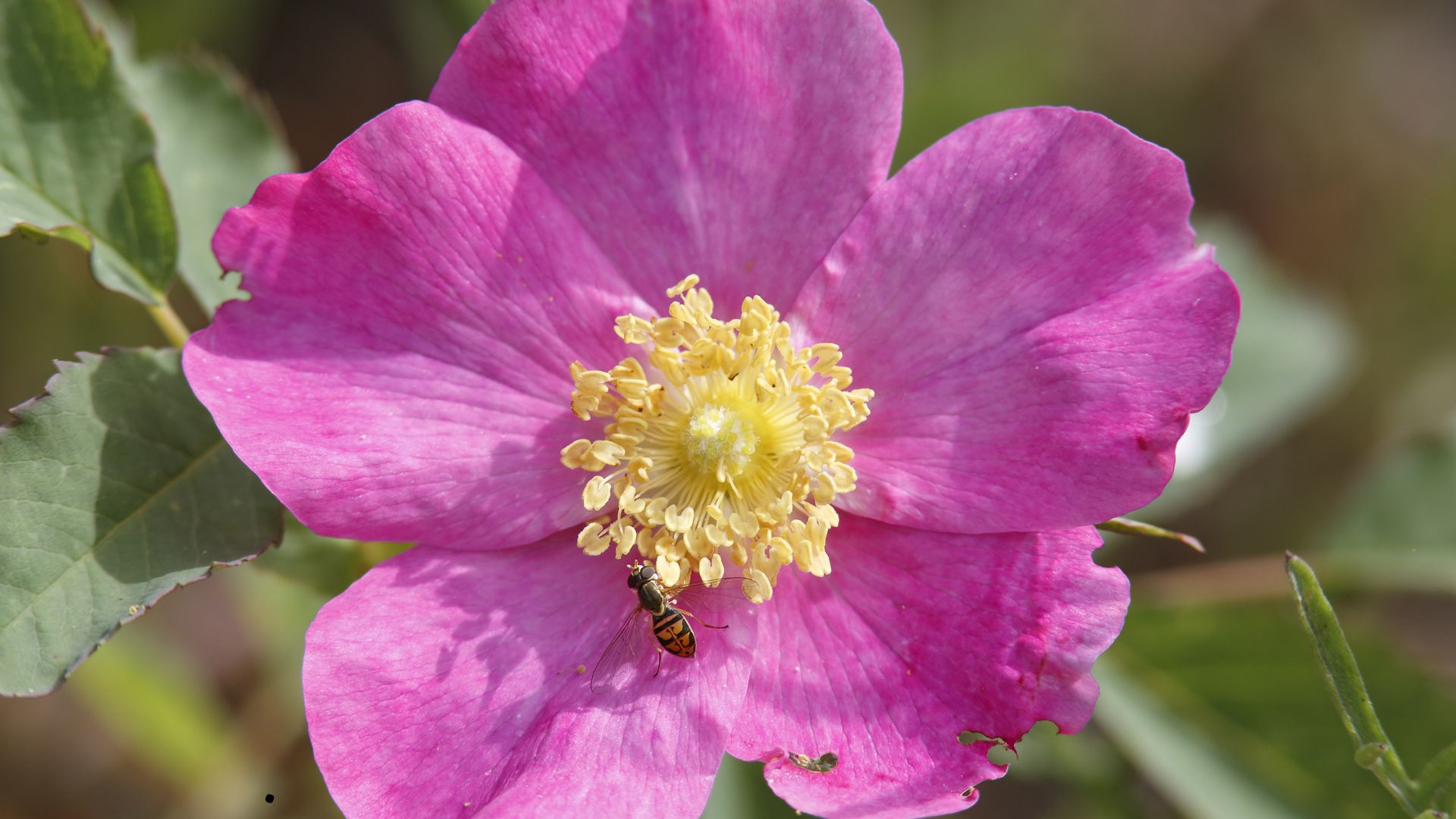
Photo: Brian Lasenby
The Wild Prairie Rose (Rosa blanda) has a long history of popularity in North Dakota. In 1889, the University of North Dakota’s first graduating class chose it for the school colors, symbolizing green prairies and rosy futures. Schoolchildren, supported by women’s clubs, voted for it to be made the state flower in 1898, but the bill to make it official was not finally approved until 1907.
Ohio
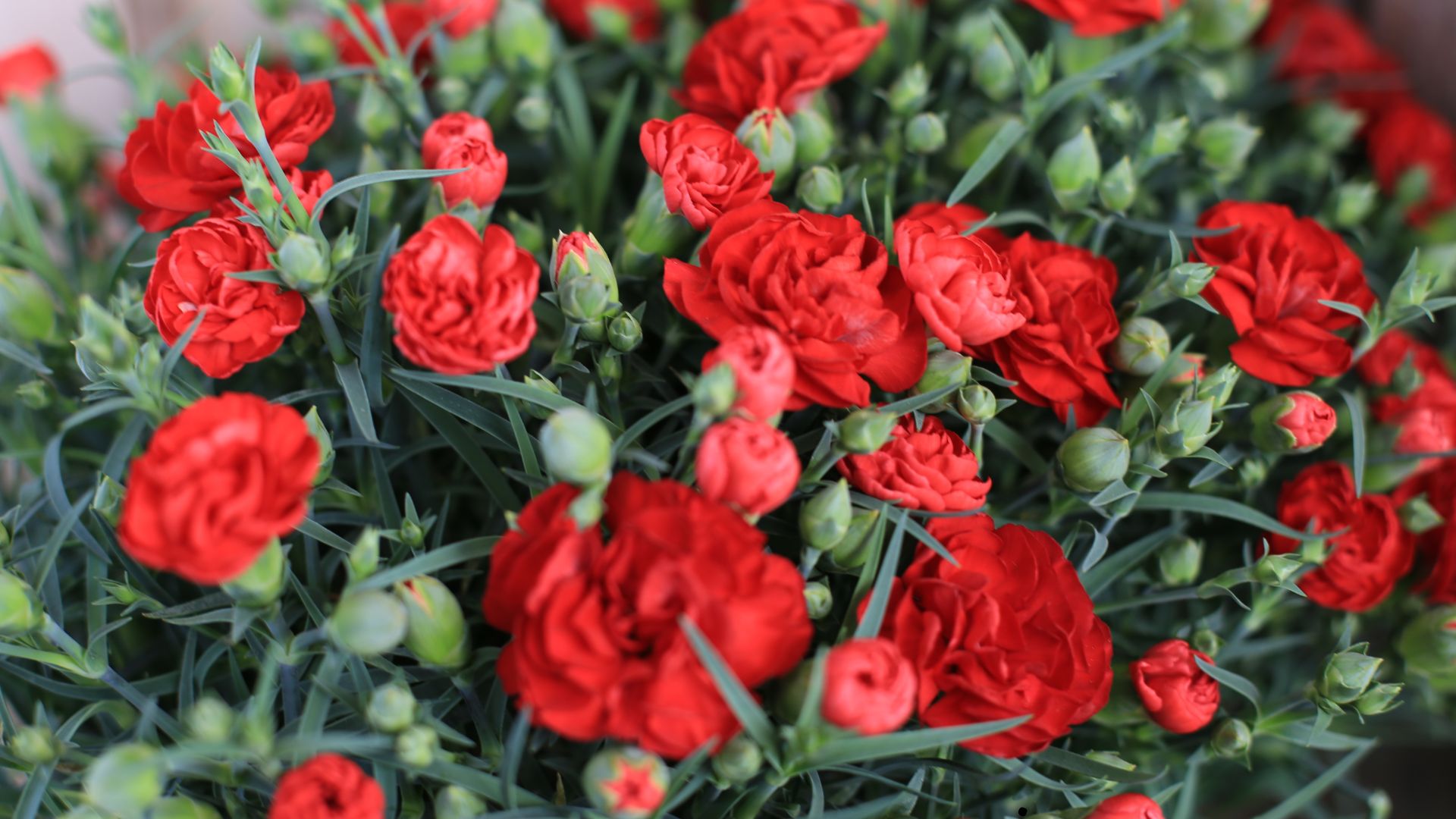
Photo: Y_Hirosan
Red Carnations (Dianthus caryophyllus) were President McKinley’s favorite flower; he hailed from Niles, Ohio, and often wore one in his lapel for luck. Unfortunately, his luck ran out in 1901 when he was shot by an assassin in New York and died 10 days later from gangrene. In 1904, the red carnation was chosen as the official state flower of Ohio to honor him.
White Trillium is the state wildflower.
Oklahoma
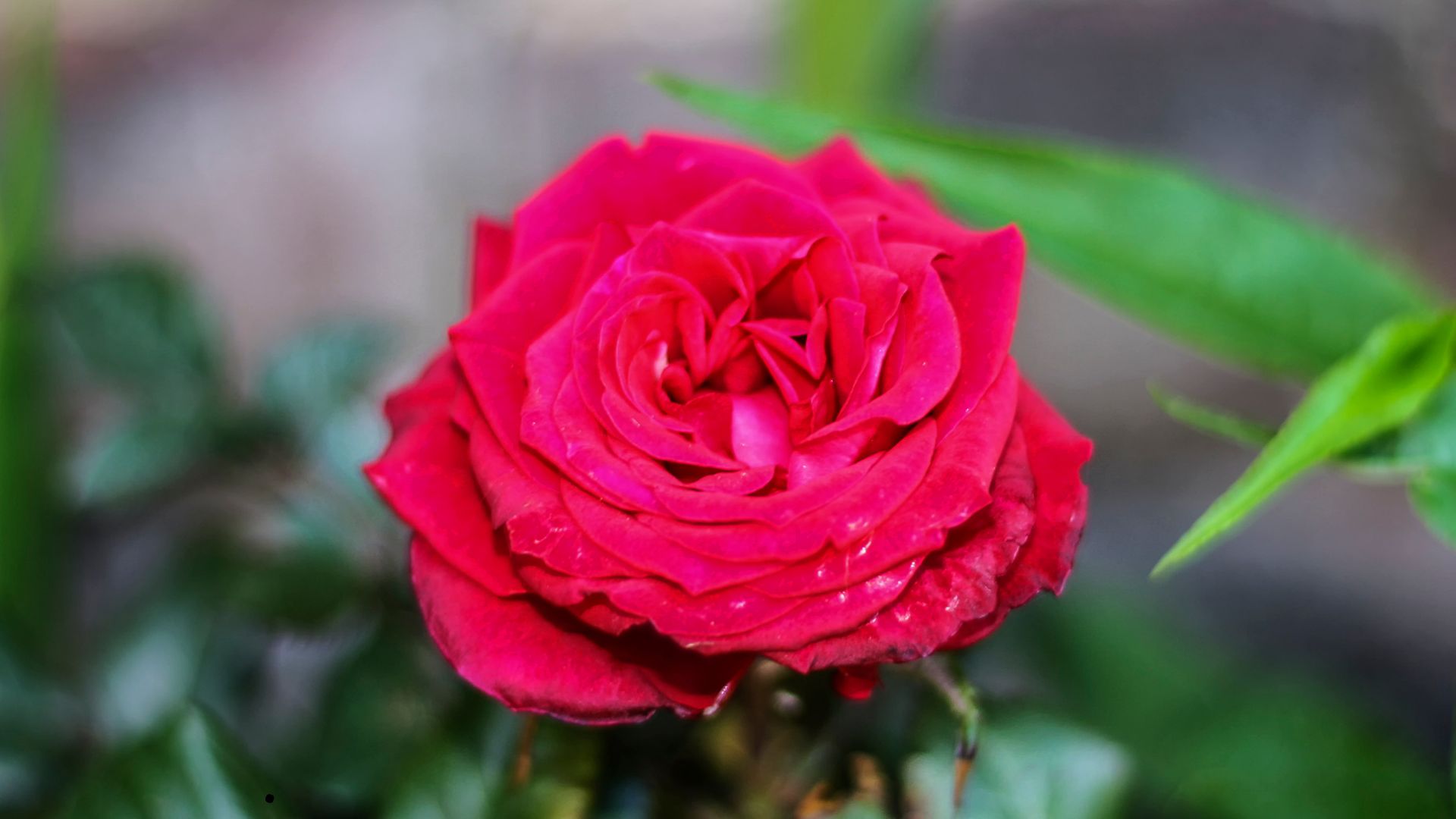
Photo: Rob Atherton
The ‘Oklahoma’ Rose is a hybrid tea rose bred at Oklahoma State University specifically for the state in 1964. It still took 40 years of lobbying by 180 garden clubs for it to be finally named the official state flower in 2004, replacing mistletoe. The disease-resistant ‘Oklahoma’ rose grows 4-8 feet tall and 3-4 feet wide. It blooms off and on from spring through fall, with each fragrant blossom made up of up to 50 red, velvety petals. It’s much nicer than mistletoe, which is a parasitic vine!
Gaillardia is the state wildflower.
Oregon
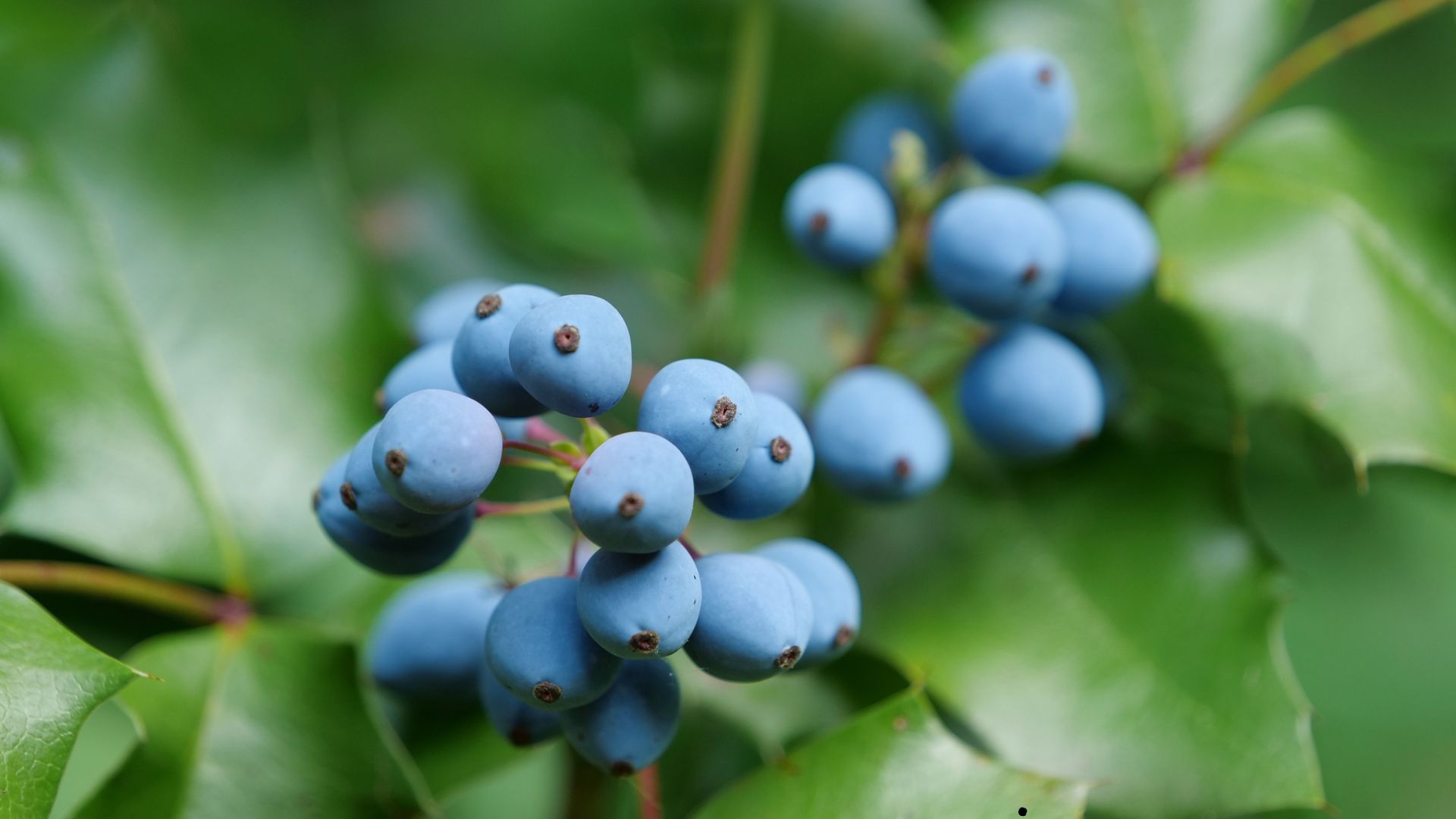
Photo: Harmony Video Production
Oregon Grape (Mahonia aquifolium) is not a true grape but does bear bitter blueberries that can be made into a tasty jam. An evergreen shrub native to the Pacific Coast, its waxy, dark green leaves resemble holly, giving it the alternate name of holly-leaved barberry. Its yellow flowers appear in early summer. The Oregon Horticultural Society nominated it in 1892 to represent the beauty of the state, beating out Pacific madrone flowers, gaillardia, trillium, and Mt. Hood lily. The state legislature officially adopted the Oregon grape as the state flower in 1899.
Pennsylvania
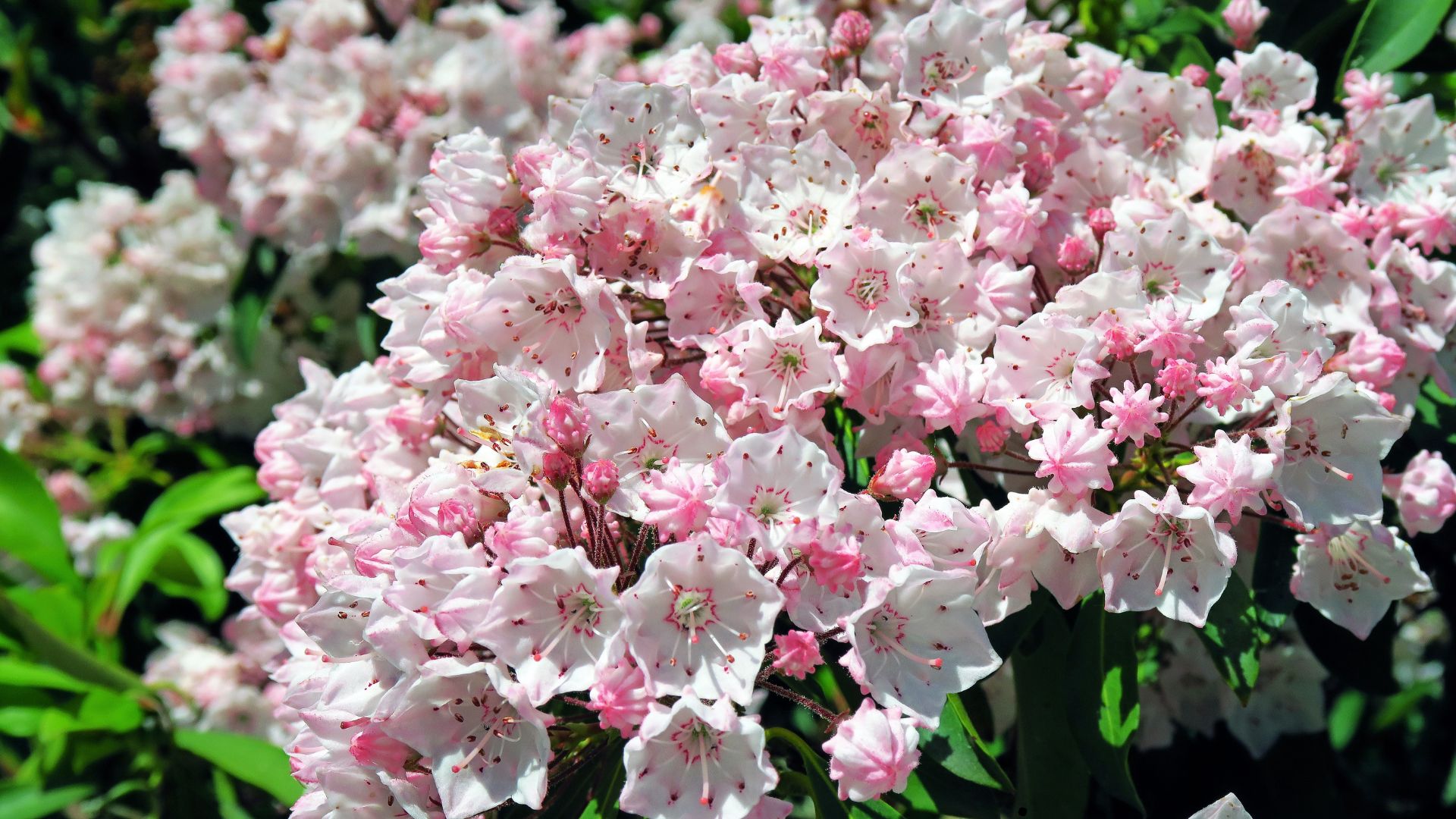
Photo: fotolinchen
Mountain Laurel (Kalmia latifolia) is an evergreen shrub in the rhododendron family, native to the eastern US. Slow-growing, its interesting wood has long been used to make tools and utensils, winning the name spoonwood. The blossoms have evolved the ability to catapult their pollen onto the bodies of visiting bumblebees, ensuring pollination. Every part of the plant is toxic, though, and honey made from its flowers has proven fatal when eaten in large quantities. In 1933, it was chosen over the pink azalea as the official state flower. Laurel Highlands, a mountainous region just east of Pittsburgh, is named for it. It is also the state flower of Connecticut.
Rhode Island
.jpg)
Photo: Hans/Pixabay
Violets (Viola sororia) were chosen over ten other flowers by schoolchildren in 1897 during an Arbor Day campaign to decide the state flower. Rhode Island, one of the last states to legislate a state flower, did not make it official until 1968. Violets are also the state flower of Illinois, New Jersey, and Wisconsin.
South Carolina
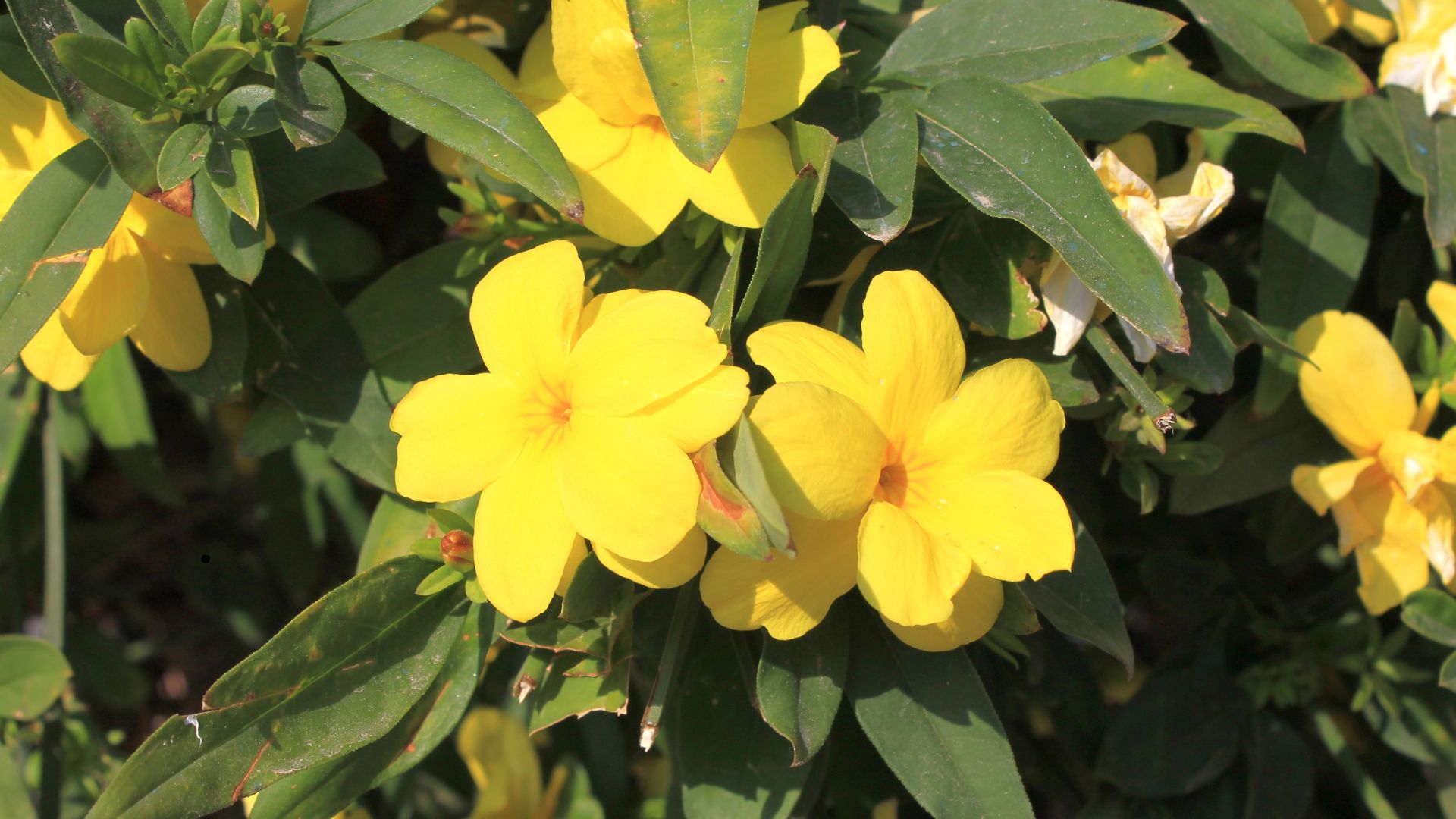
Photo: Shef-Time
Yellow Jessamine (Gelsemium sempervirens) is a native evergreen vine that blooms abundantly across the state in late winter to signal spring’s arrival. Its fragrant yellow trumpet-shaped flowers, also called Carolina Jasmine, are pretty but poisonous. The plant became the official state flower in 1924 and is also pictured on the state quarter.
Goldenrod is the state wildflower.
South Dakota
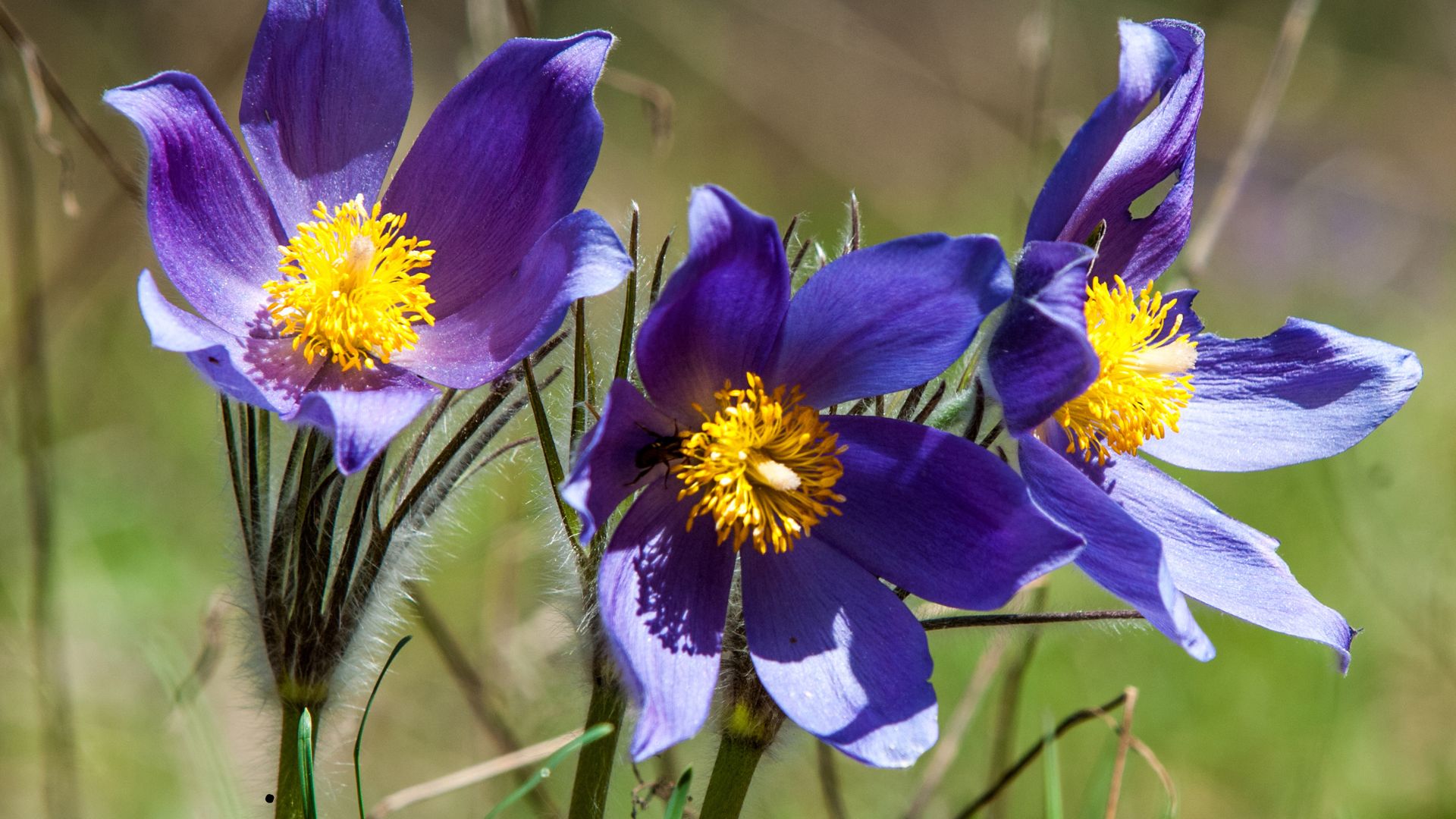
Photo: Tatyana Mishchenko
American Pasque Flower (Pulsatilla hirsutissima) is a native prairie wildflower. Its deep purple blossoms are among the first to emerge in the spring, earning it the nicknames May Day Flower and Prairie Crocus. Lakota natives thought the buds looked like a newborn baby’s belly button! It was chosen as the official state flower in 1903.
Tennessee

Photo: aimintang
In 1973, the iris was named the official state-cultivated flower to clarify a misunderstanding. Back in 1919, schoolchildren picked the passion flower as the state flower, but in 1933, the state legislature named the iris the state flower, not realizing they already had one! In 1973, the passion flower was moved to state wildflower along with Tennessee coneflower.
Passion Flower and Tennessee Coneflower share the title of state wildflower.
Texas
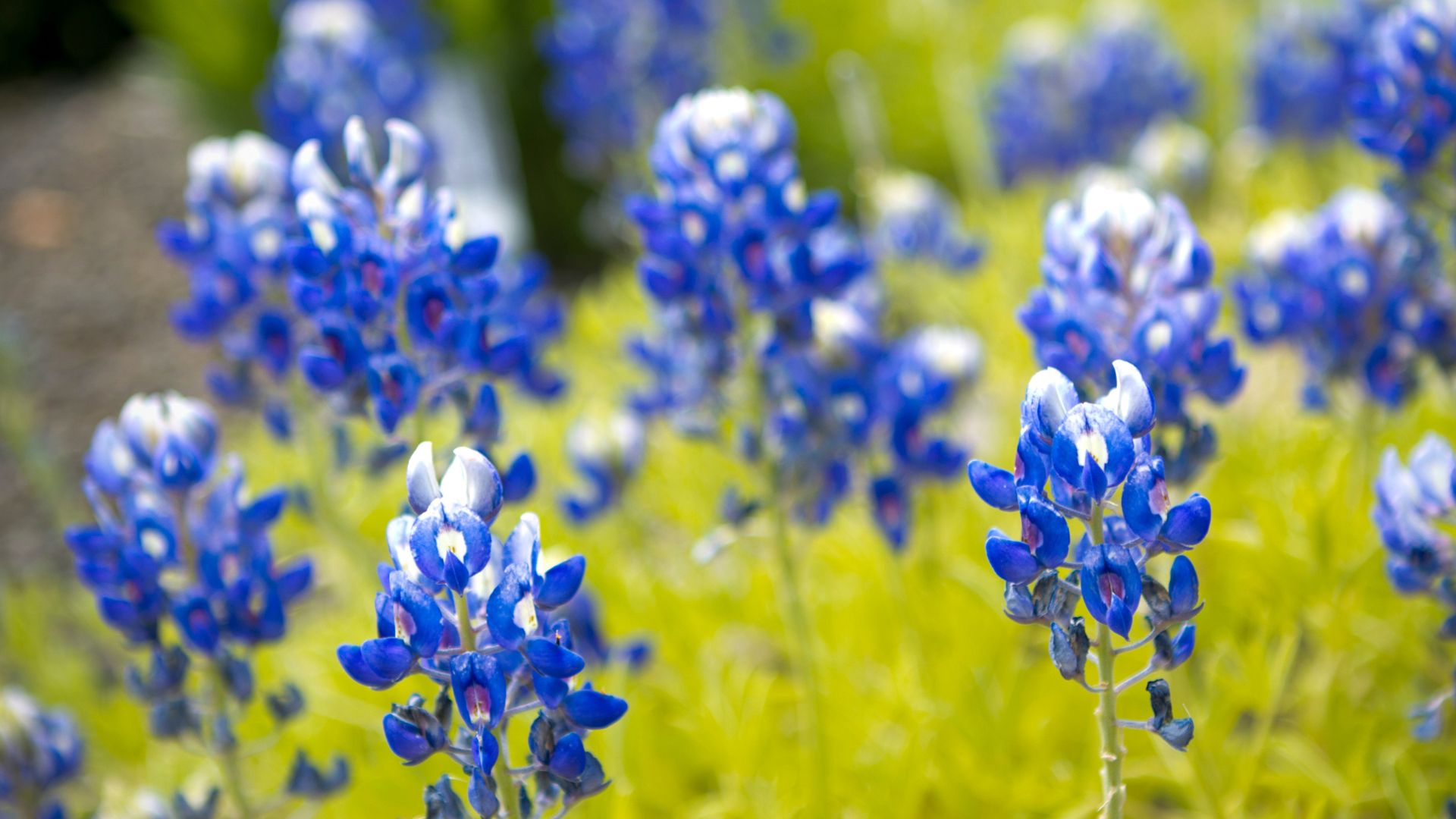
Photo: YoungVet
Bluebonnets (Lupinus texensis) are spring-bloomers native to grassland prairies and plains and resemble a pioneer woman’s sunbonnet. They were chosen by the National Society of Colonial Dames of America in 1901 to honor pioneer women and adopted by the state legislature the same year, beating out cotton blossoms and cactus flowers. In the 1930s, the Texas Highway Dept. seeded them along roadsides, where they naturalized and continued to thrive.
Utah
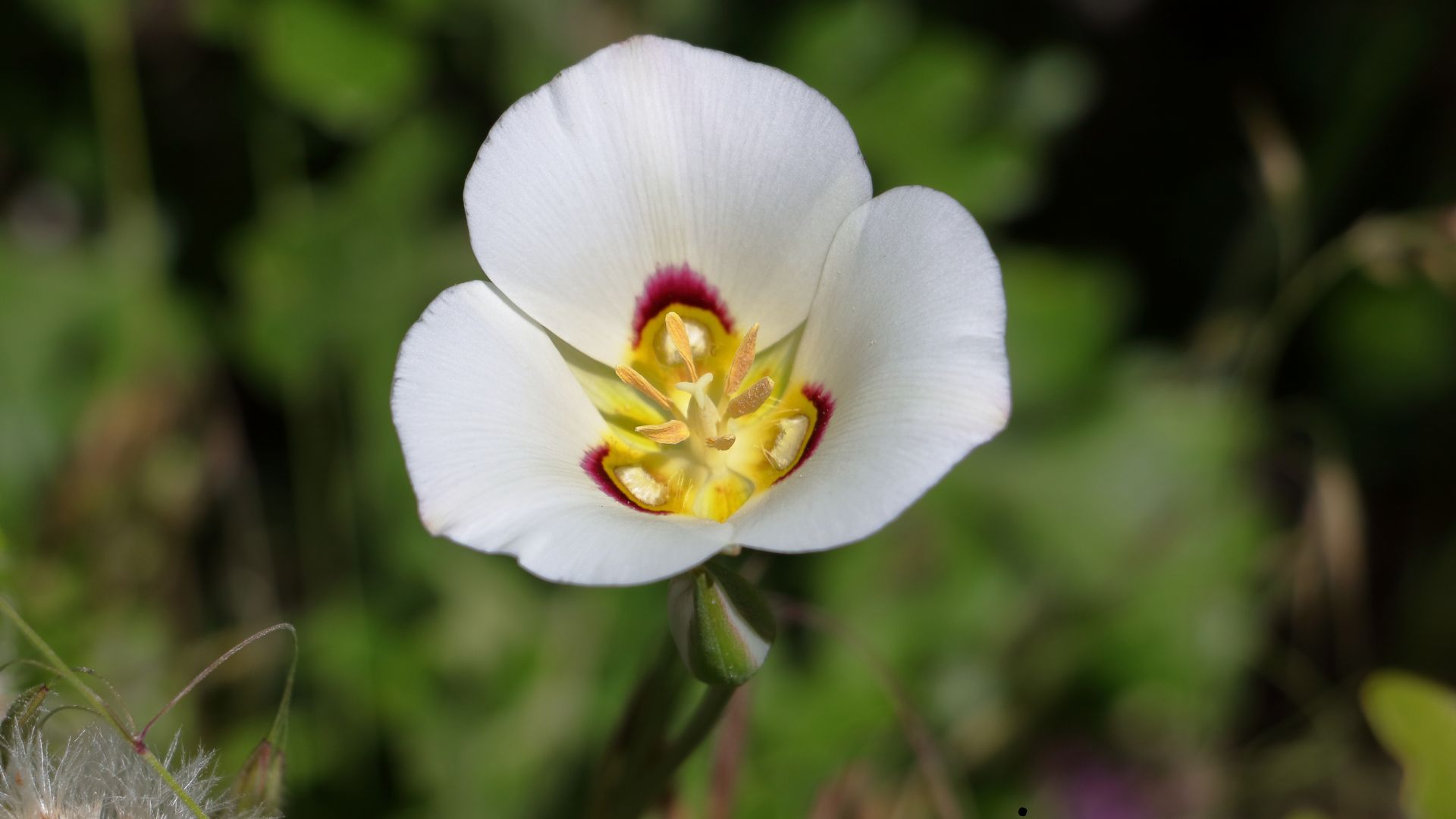
Photo: salilbhatt
Sego Lily (Calochortus nuttalli) is native to grassland prairies of many western states where its bulb was part of indigenous people’s diets. During the 1840s, natives taught Mormon pioneers - who were starving after crickets had eaten all their crops - how to harvest and prepare the bulbs. In later years, it became a badge of courage among settlers to be called a bulb-eater. The Sego lily was used to represent the Utah Territory, and they made it their official state flower in 1911. Utah is the only state to have an official cooking pot – the Dutch oven!
Vermont
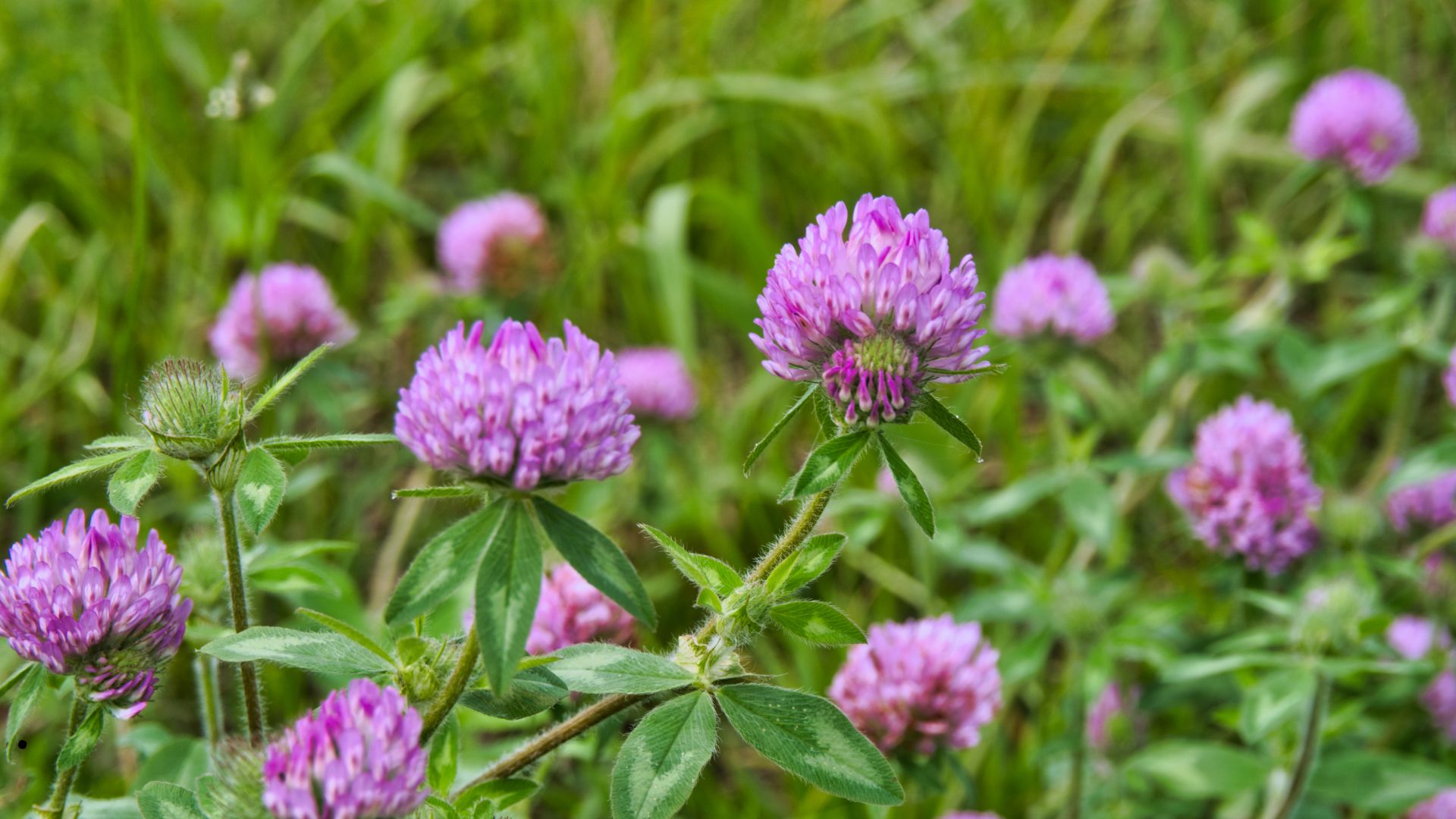
Photo: Humitosi18
Red Clover (Trifolium pretense) seeds were brought to Vermont by English colonists to grow nutrient rich animal fodder. It has since naturalized and can be seen blossoming in fields and along roadsides throughout the state. Its pinkish-purple flowers were chosen to pay homage to farmers and the long history of Vermont agriculture and adopted as the official state flower in 1894 beating out other flowers including buttercups and daisies.
Virginia
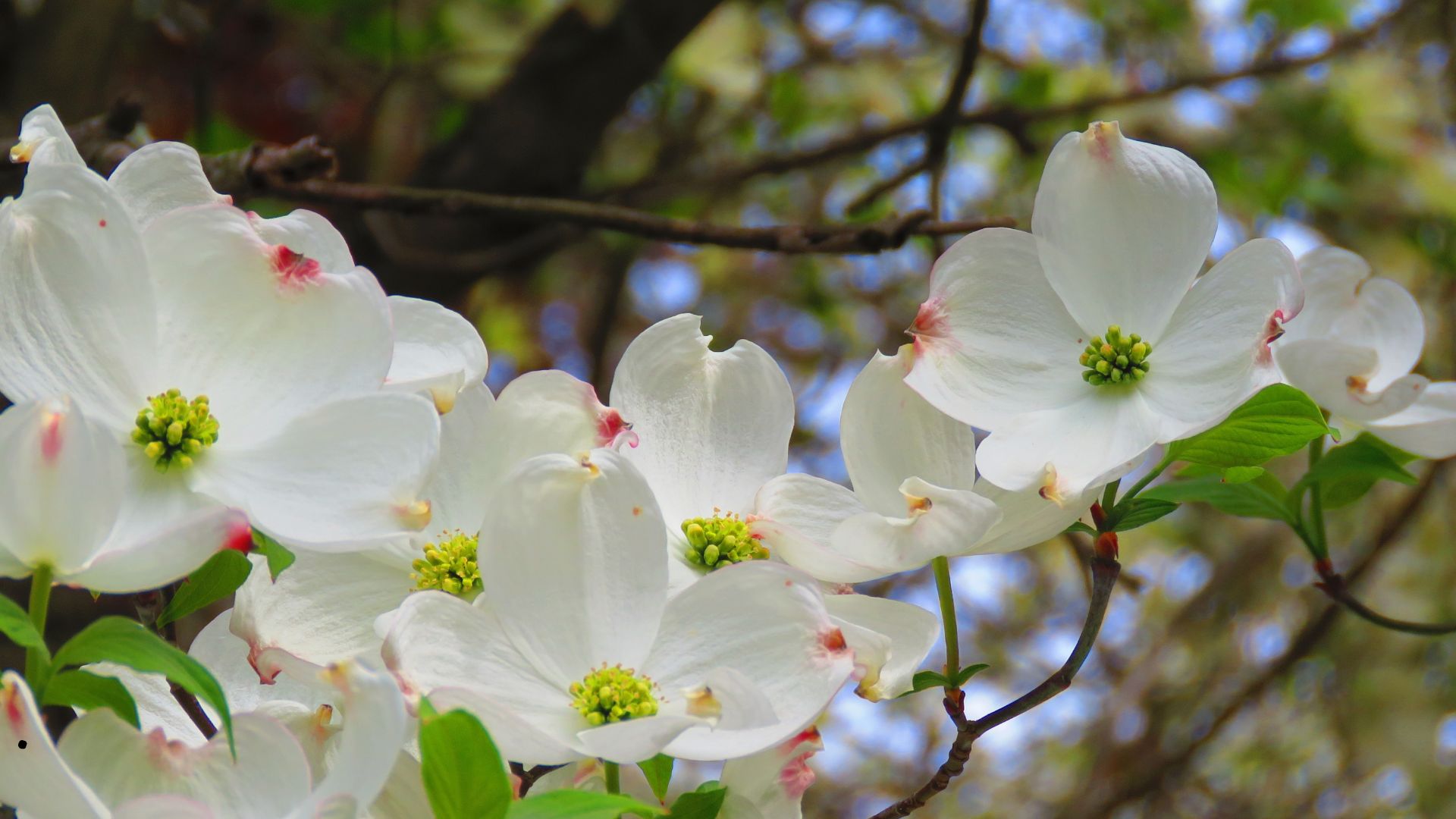
Photo: Przemyslaw Muszynski
American Dogwood (Cornus florida) has a long history in the state. Thomas Jefferson planted many types of dogwood at Monticello in the 1770s. When he was Minister to France in 1784-1789, he gave seeds to colleagues there who shared his love of horticulture. Because of Jefferson, in 1918, the state legislators chose dogwood to be the official state flower in hopes of inspiring citizens to take an interest in the history and traditions of the state, and in 1956, the dogwood was also named the state tree. It is also the state flower of North Carolina.
Virginia Bluebell, a beautiful spring ephemeral, is the state wildflower.
Washington
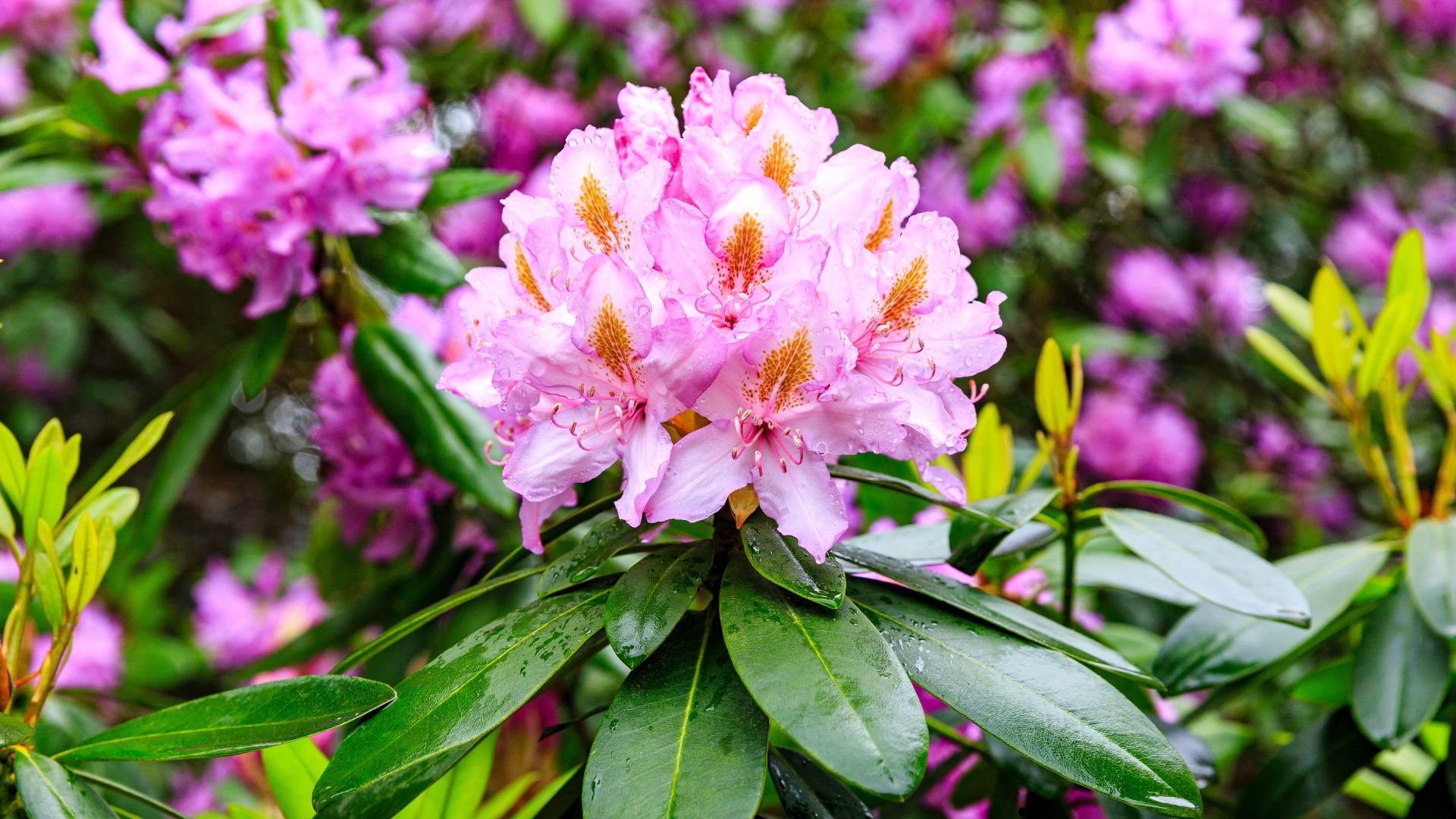
Photo: Thomas Hagenau
Coast Rhododendron (Rhododendron macrophyllum) was chosen by special ballot in 1892 by Washington women to be the state’s floral emblem for the 1893 Chicago World’s Fair. Since women did not have the right to vote at that time, special voting booths were set up for them across the state, and the choices were narrowed down to clover or rhodies. This species of rhododendron, whose name means “rose tree with big leaves,” is native to open forests west of the Cascades. Its standing as the state flower was made official in 1959.
West Virginia
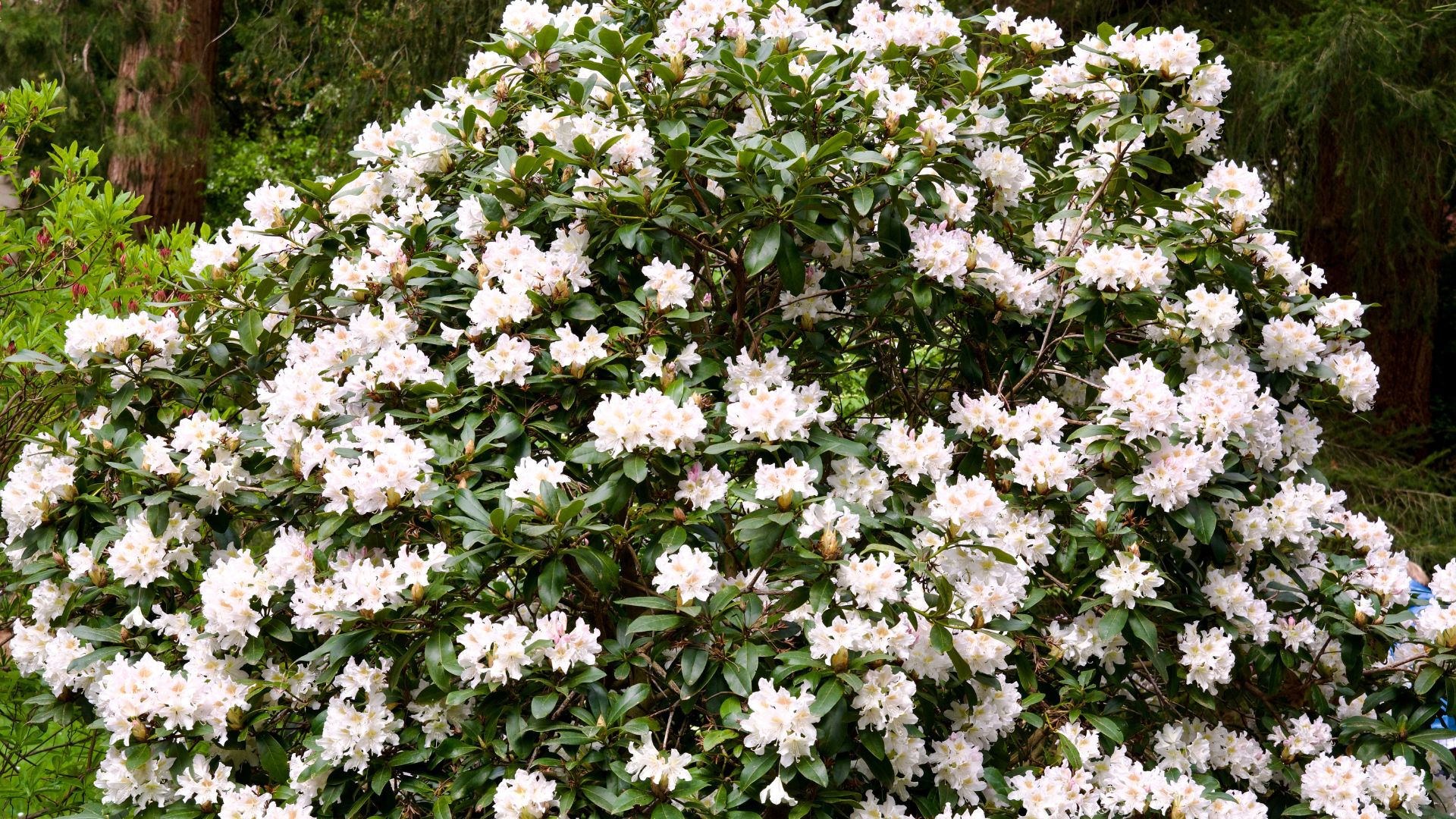
Photo: Gerrit Lammers
Great Rhododendron (Rhododendron maximum) was chosen by school children from across the state, beating out the wild rose and honeysuckle, to be named official state flower in 1903. Native to the eastern US, it thrives in acid soil in sun or shade, in wet woods or swamps, blossoming in late spring. Its hard wood is prized for making furniture, tool handles, walking sticks, and slingshots!
Wisconsin
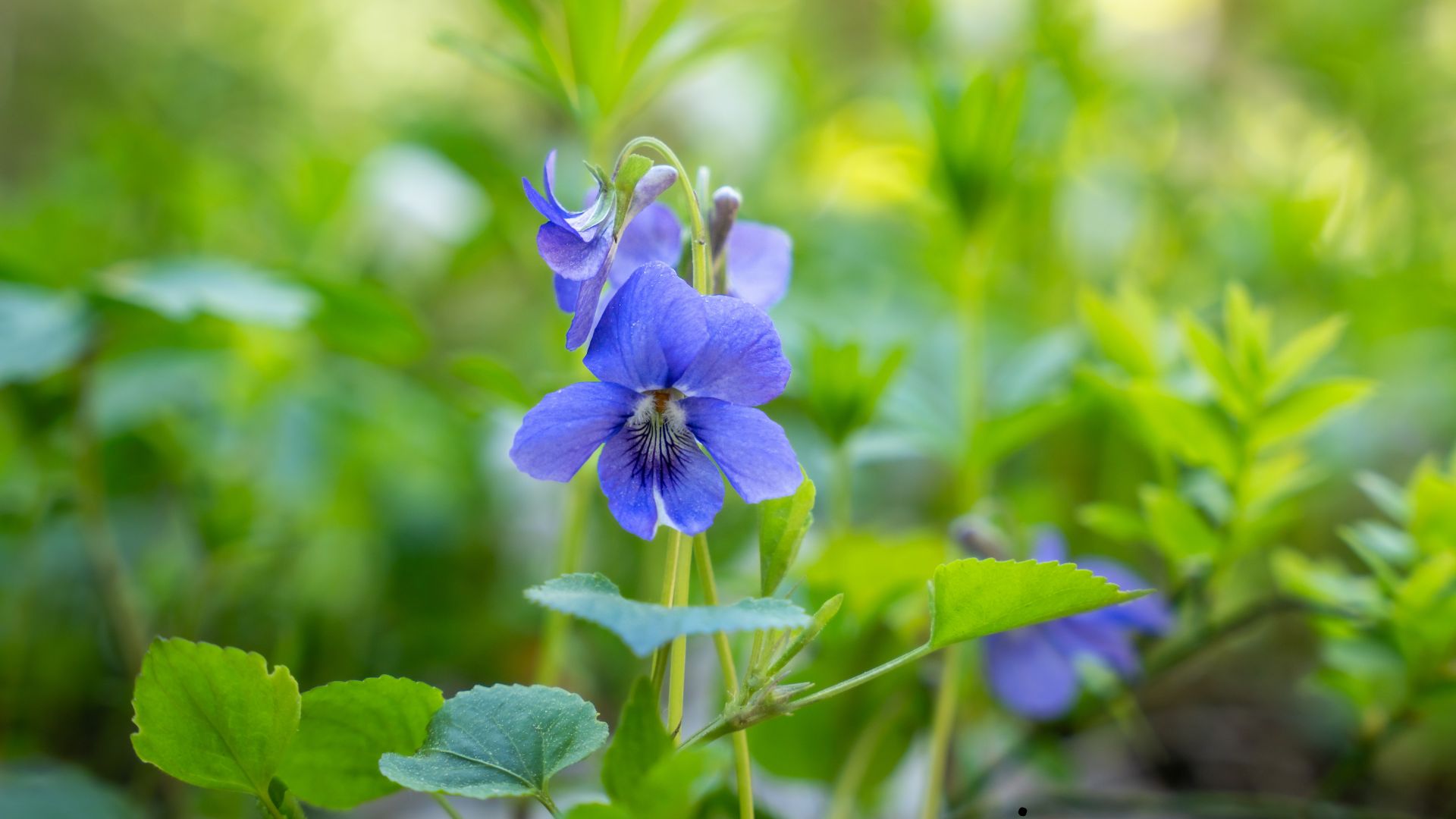
Photo: KajaHiis
Wood Violets (Viola papilionacea) are plentiful spring flowers blossoming from April to June in the fields, backyards, and woodlands of Wisconsin. Nominated for state flower in 1908 by school children, along with trailing arbutus, white water lilies, and wild roses, it was unofficially adopted as state flower on Arbor Day in 1909. It wasn’t made official until signed into law in 1949. A violet is also the state flower of Illinois, New Jersey, and Rhode Island.
Wyoming
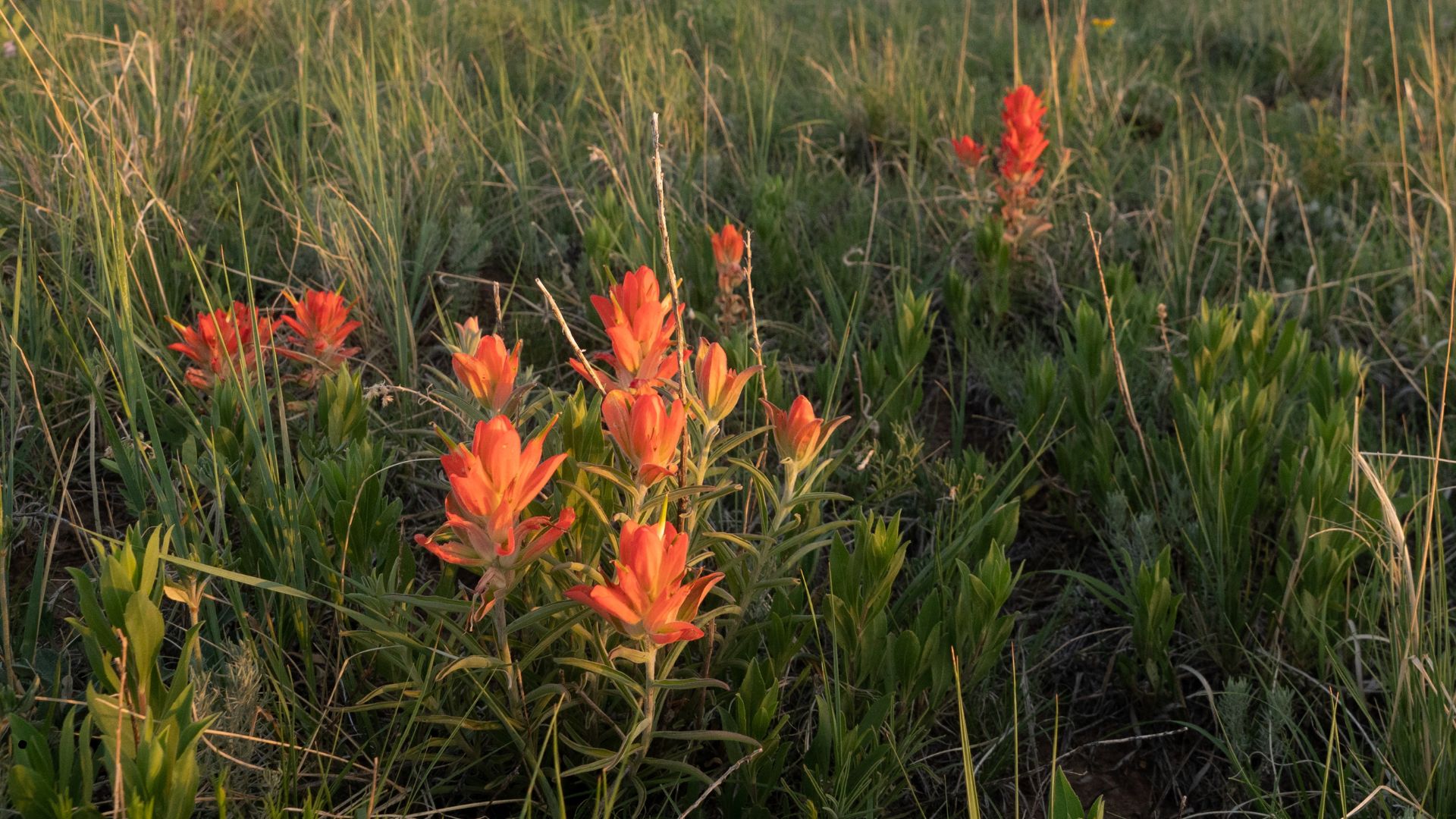
Photo: Teresa Otto
Indian Paintbrush (Castilleja linariaefolia) is also called prairie fire for its upright, bright orange flowers. It was used by native people medicinally and for making red dye. The whole plant is edible and nutritious. In the late 1800s, school children picked fringed gentian as their favorite over several other flowers, including Indian paintbrush and columbine, but it was never made official. In 1917, the DAR and Dr. Grace Heberd of the University of Wyoming and Wyoming’s first woman attorney lobbied hard for the Indian paintbrush to be voted in as the official state flower, and their will prevailed.
And there you have it, a colorful bouquet of state flowers! Each one tells a unique story, reflecting the history, culture, and natural beauty of its respective state. So, the next time you’re exploring America, be sure to keep an eye out for these floral treasures and appreciate the diversity and richness of our nation’s botanical heritage.
Looking for a fun activity? Color a bouquet of your favorite state flowers!
What is your state flower? Do you agree with it? Tell us in the comments below!
ADVERTISEMENT
ADVERTISEMENT
Robin ..thank you! I learned so much. A fascinating history of the origin of our state flowers.
ADVERTISEMENT








